Wood stair railings represent one of the most transformative elements in home design, seamlessly blending safety with stunning visual appeal. Whether you're renovating an existing staircase or planning a new construction project, wooden railings offer timeless charm while accommodating modern trends toward minimalist aesthetics and mixed-material designs. From traditional farmhouse styles to cutting-edge contemporary looks featuring LED integration, today's wood stair railing options provide endless possibilities to elevate your home's architectural character while ensuring long-lasting functionality and code compliance.
1. Classic Wood Stair Railing with White Painted Balusters
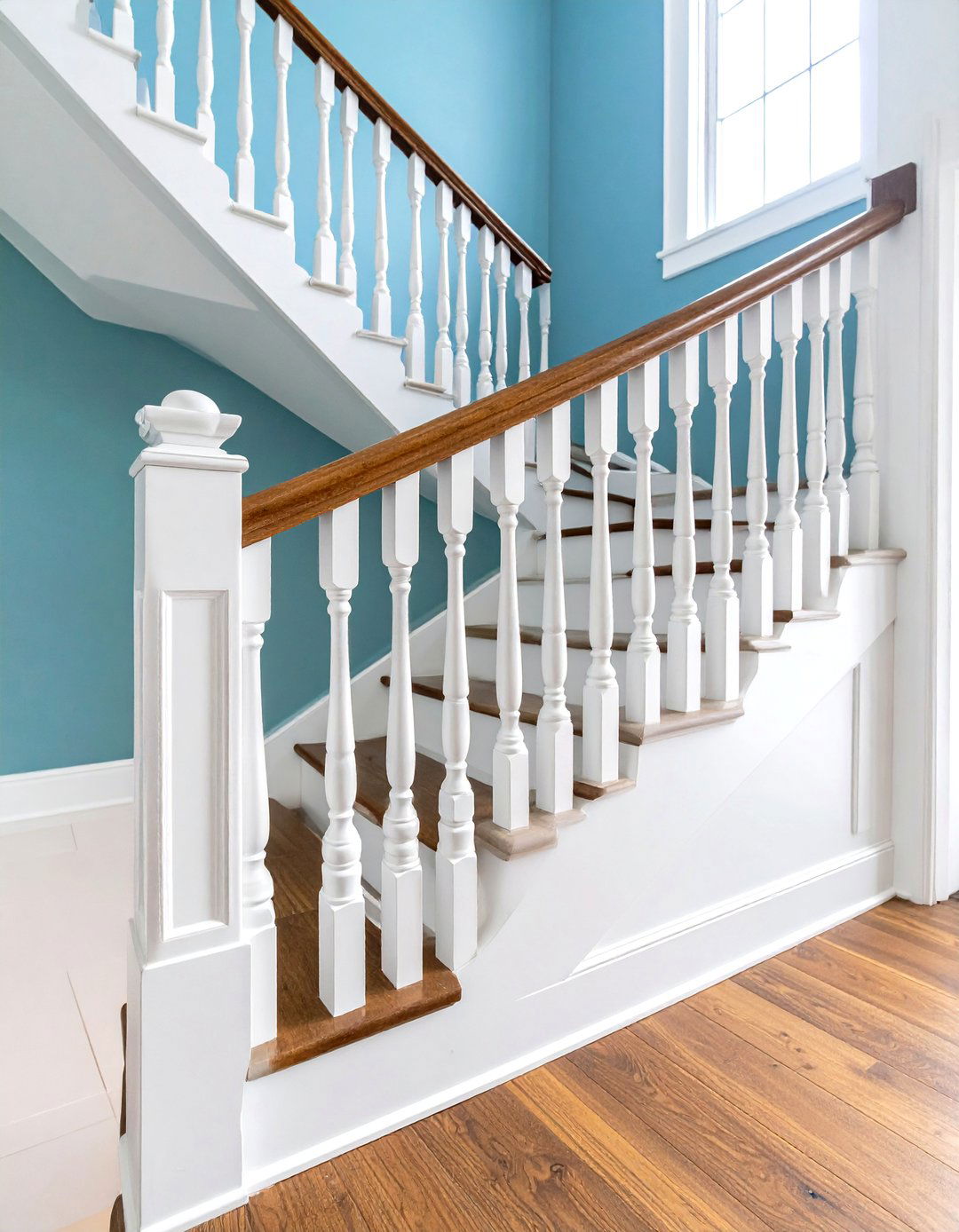
Traditional elegance meets practical design in this timeless wood stair railing approach that continues to dominate 2025 trends. The combination of natural wood handrails with crisp white painted balusters creates visual contrast while maintaining a sophisticated, heritage-inspired aesthetic. This design works exceptionally well in homes with existing white trim, allowing the warm wood tones to serve as a beautiful accent against the clean backdrop. The white balusters help reflect light throughout the stairwell, making spaces feel more open and airy. Installation typically involves standard 2-inch spacing between balusters for safety compliance, while the handrail can be crafted from oak, maple, or other hardwoods to match existing flooring. This versatile style adapts beautifully to both straight and curved staircases, making it an excellent choice for homes seeking classic appeal.
2. Rustic Farmhouse Wood Stair Railing with Metal Accents
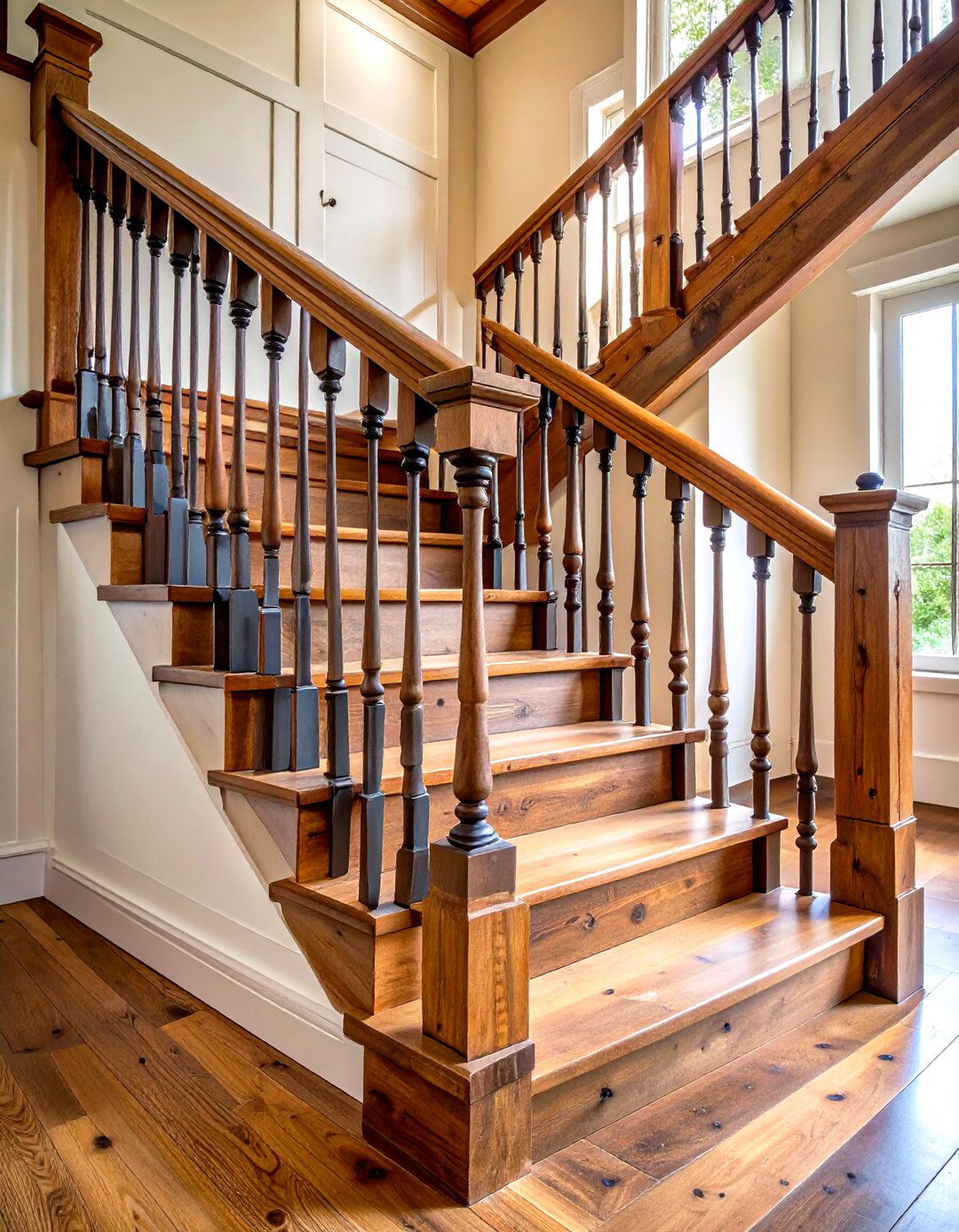
Bringing countryside charm into modern homes, this wood stair railing design perfectly captures the farmhouse aesthetic through strategic material mixing. The combination of thick, rough-hewn wooden handrails with sleek black iron balusters creates a striking visual balance between industrial and rustic elements. Natural wood grains and deep stain finishes emphasize the organic beauty, while metal components add contemporary durability and style. This approach works particularly well with shiplap walls and exposed beam ceilings, creating a cohesive rustic environment. The contrast between warm wood and cool metal provides visual interest without overwhelming the space. For authentic farmhouse appeal, consider using reclaimed barn wood for posts and handrails, paired with simple vertical metal rods. This design philosophy extends beyond aesthetics, offering practical benefits through the longevity of metal components combined with wood's natural warmth and comfort.
3. Modern Wood Stair Railing with Horizontal Slats

Contemporary design principles shine through this sleek wood stair railing featuring clean horizontal lines that emphasize modern architectural values. Horizontal wooden slats create dynamic visual interest while maintaining the minimalist aesthetic that defines current design trends. This approach works exceptionally well in open-concept homes where the staircase serves as a sculptural element. The horizontal orientation draws the eye across the space, making rooms appear wider and more expansive. Careful attention to spacing ensures safety compliance while creating an elegant pattern of light and shadow. Popular wood choices include walnut, cherry, or white oak with natural finishes that highlight the grain patterns. Installation requires precise engineering to ensure structural integrity, but the result is a stunning contemporary statement piece. The horizontal slat design also offers practical advantages by reducing visual clutter and allowing light to flow freely throughout the space.
4. Curved Wood Stair Railing for Spiral and Winding Staircases

Architectural sophistication reaches new heights with curved wood stair railings that gracefully follow the flowing lines of spiral and winding staircases. These railings combine high-polish wooden handrails with complementary balusters, creating seamless transitions that emphasize the staircase's elegant curves. The craftsmanship required for curved installations demands expert woodworking skills, as each piece must be precisely shaped to maintain consistent spacing and structural integrity. Steam-bending techniques allow hardwoods to achieve gentle curves without compromising strength, while modern lamination methods enable tighter radii for spiral applications. The visual impact of curved wood railings transforms ordinary staircases into architectural focal points that command attention. Popular applications include grand entryways, loft conversions, and homes with unique architectural features. The flowing lines create a sense of movement and grace that enhances the overall spatial experience while maintaining essential safety functions.
5. Wood Stair Railing with Integrated LED Lighting
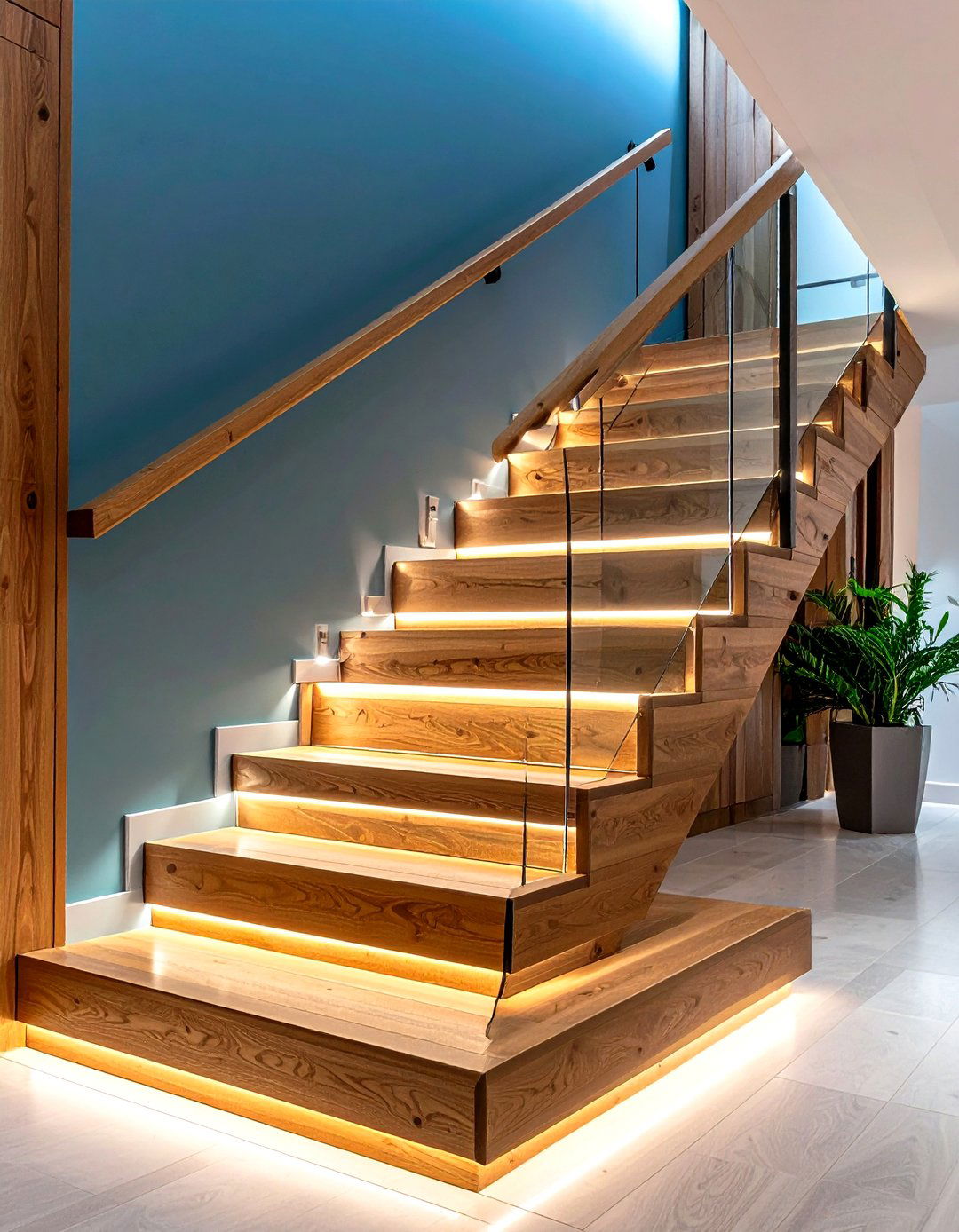
Innovation meets tradition in this cutting-edge wood stair railing design that incorporates LED lighting for enhanced safety and dramatic visual impact. LED strips embedded within hanrails or under-mounted lighting systems create ambient illumination while highlighting the natural wood grain patterns. The integration process involves routing channels within the wooden hanrail to conceal wiring and LED strips, creating a seamless appearance during daylight hours. Evening illumination provides practical benefits by improving stairway visibility while creating stunning accent lighting throughout the home. Advanced systems connect to smart home automation, allowing customizable brightness levels and color temperatures. The warm glow enhances the wood's natural beauty while providing subtle wayfinding assistance. Installation requires careful planning to accommodate electrical connections and ensure moisture protection. Popular configurations include under-hanrail lighting that casts downward illumination and side-mounted strips that create dramatic uplighting effects. This design represents the future of stair railing technology.
6. Live Edge Wood Stair Railing Design

Natural beauty takes center stage in this organic wood stair railing approach that celebrates the unfinished edges and unique characteristics of raw timber. Live edge designs bring the wonders of nature indoors, creating hanrails that feature the natural contours and bark edges of the original tree. Each installation becomes a unique artistic statement, as no two pieces of live edge wood are identical. Popular species include walnut, cherry, maple, and cedar, chosen for their attractive grain patterns and natural edge characteristics. The irregular surfaces require custom fabrication techniques and specialized mounting hardware to ensure proper support and safety compliance. Clear protective finishes preserve the natural appearance while providing durability against daily use. This design philosophy works exceptionally well in rustic, modern rustic, and contemporary settings where natural elements are celebrated. The organic shapes create visual interest and conversation pieces that connect indoor spaces with the natural world. Installation considerations include moisture control and seasonal movement accommodation.
7. Wood Stair Railing with Cable Infill
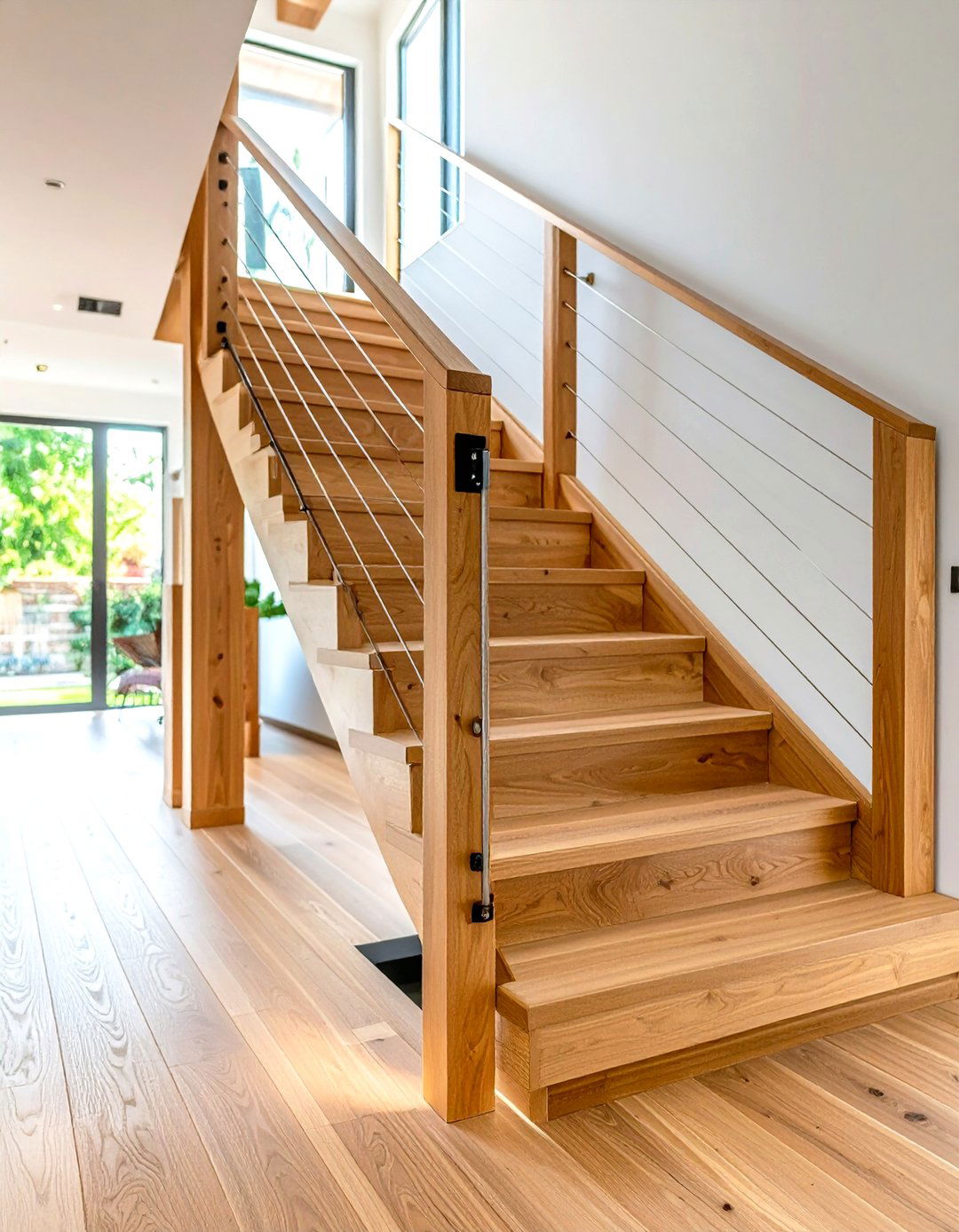
Contemporary aesthetics meet practical engineering in this modern wood stair railing design that combines warm wooden components with sleek stainless steel cable systems. The cable infill creates an almost invisible barrier while maintaining open sight lines and allowing natural light to flow freely throughout the space. Horizontal cables typically span between wooden posts at precise intervals to meet building codes while preserving the minimalist appearance. The combination of materials creates visual contrast between the organic warmth of wood and the industrial precision of steel cables. Popular wooden elements include box newels, hanrails, and post caps crafted from hardwoods like oak, maple, or walnut. The cable system requires professional installation and periodic maintenance to ensure proper tension and safety compliance. This design works exceptionally well in modern homes, lofts, and contemporary spaces where unobstructed views are priorities. The resulting appearance is sophisticated and streamlined, perfect for showcasing architectural features and maintaining open spatial relationships.
8. Box Newel Wood Stair Railing
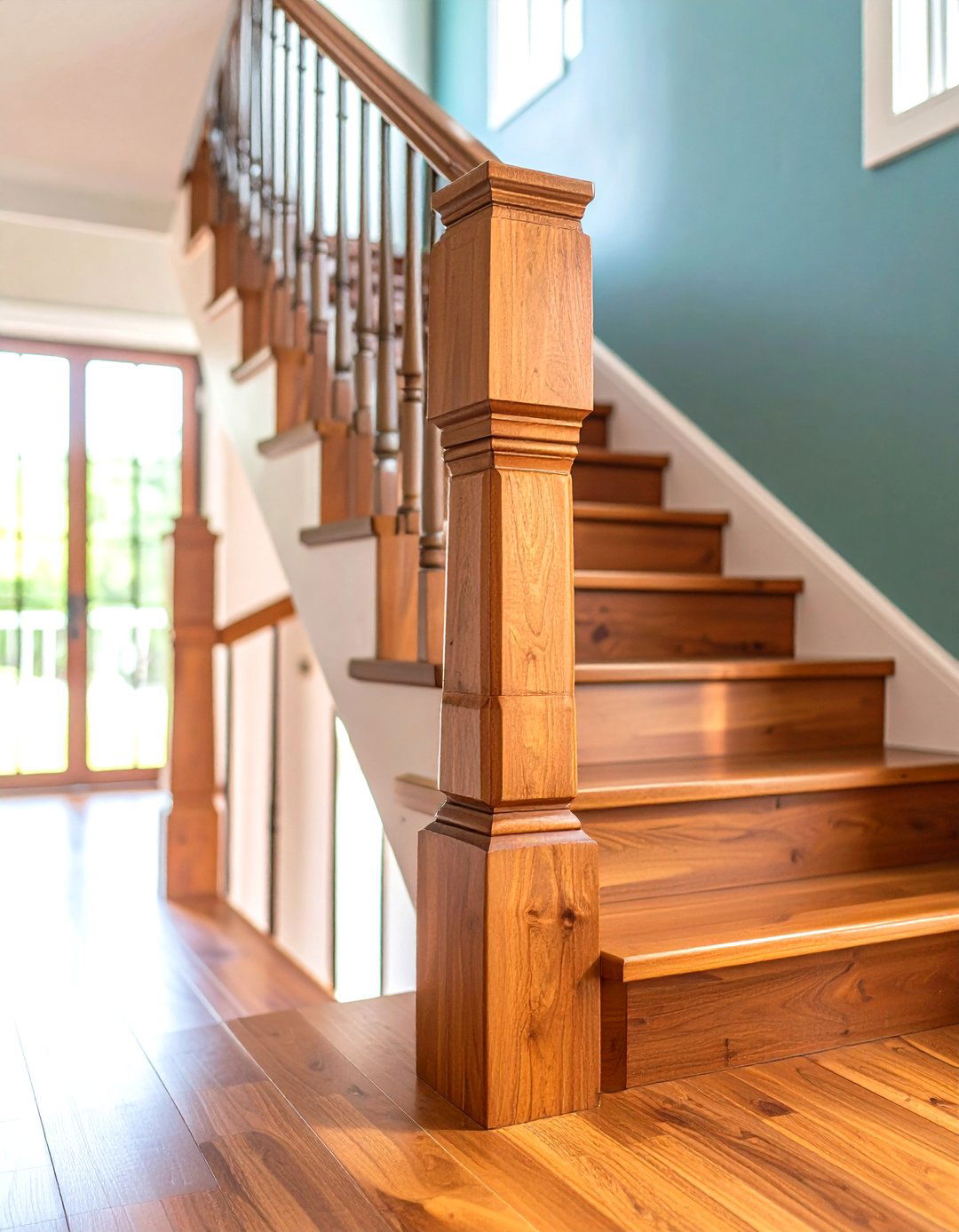
Architectural refinement defines this substantial wood stair railing style featuring square, boxed newel posts that create strong vertical elements and contemporary appeal. Box newels are adaptable design elements that fit seamlessly into various railing configurations, whether classic or contemporary interior styles are preferred. The squared-off profile contrasts beautifully with rounded hanrails and traditional turned balusters, creating visual interest through geometric variation. Construction typically involves hollow or solid wooden posts with decorative caps and trim details that can be customized to match specific design preferences. Popular wood choices include painted pine for traditional looks or natural hardwoods for contemporary applications. The substantial appearance of box newels provides excellent structural support while creating impressive visual anchors at staircase transitions. Installation involves careful attention to plumb and level requirements, as these prominent elements become focal points that must appear perfectly positioned. The versatility of box newel designs allows for integration with various baluster styles and hanrail profiles.
9. Wood Stair Railing with Glass Panel Inserts
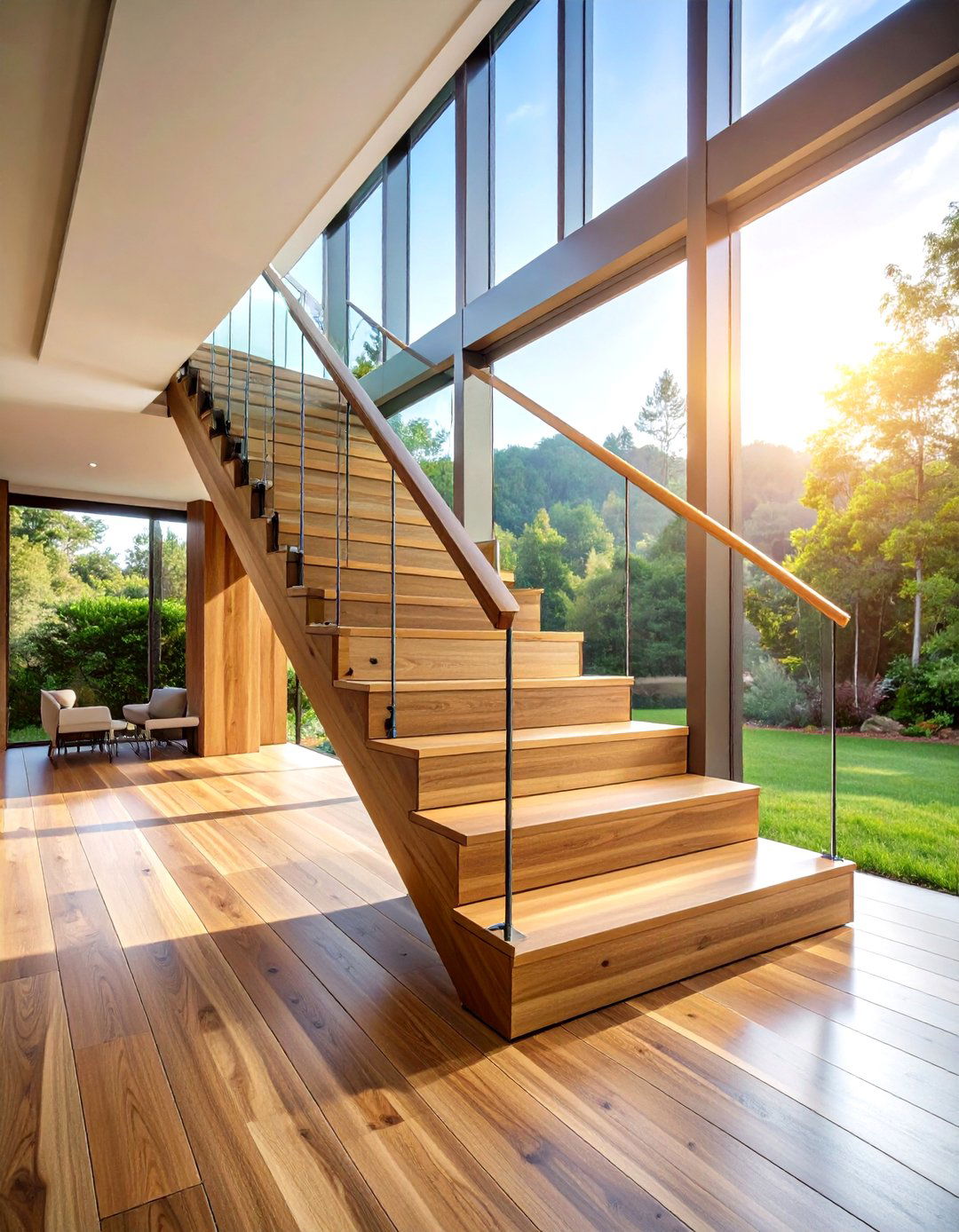
Sophisticated transparency characterizes this elegant wood stair railing design that incorporates tempered glass panels between wooden framework components for a refined contemporary appearance. The combination creates striking visual contrast while maintaining structural integrity and safety compliance through the integration of transparent barriers. Wooden frames typically feature groove-routed channels that securely hold glass panels without visible fasteners, creating clean, uninterrupted lines. The glass components maximize natural light transmission while providing the necessary safety barriers required by building codes. Popular configurations include full-height panels between posts or horizontal glass strips within wooden frames. The transparency preserves spatial relationships and sight lines while adding architectural sophistication. Professional installation ensures proper glass handling, secure mounting, and weather sealing for durability. Maintenance involves simple cleaning procedures to maintain clarity and appearance. This design approach works exceptionally well in modern and transitional homes where natural light preservation and open spatial relationships are priorities. The combination of materials creates timeless appeal that complements various architectural styles.
10. Floating Wood Stair Railing System
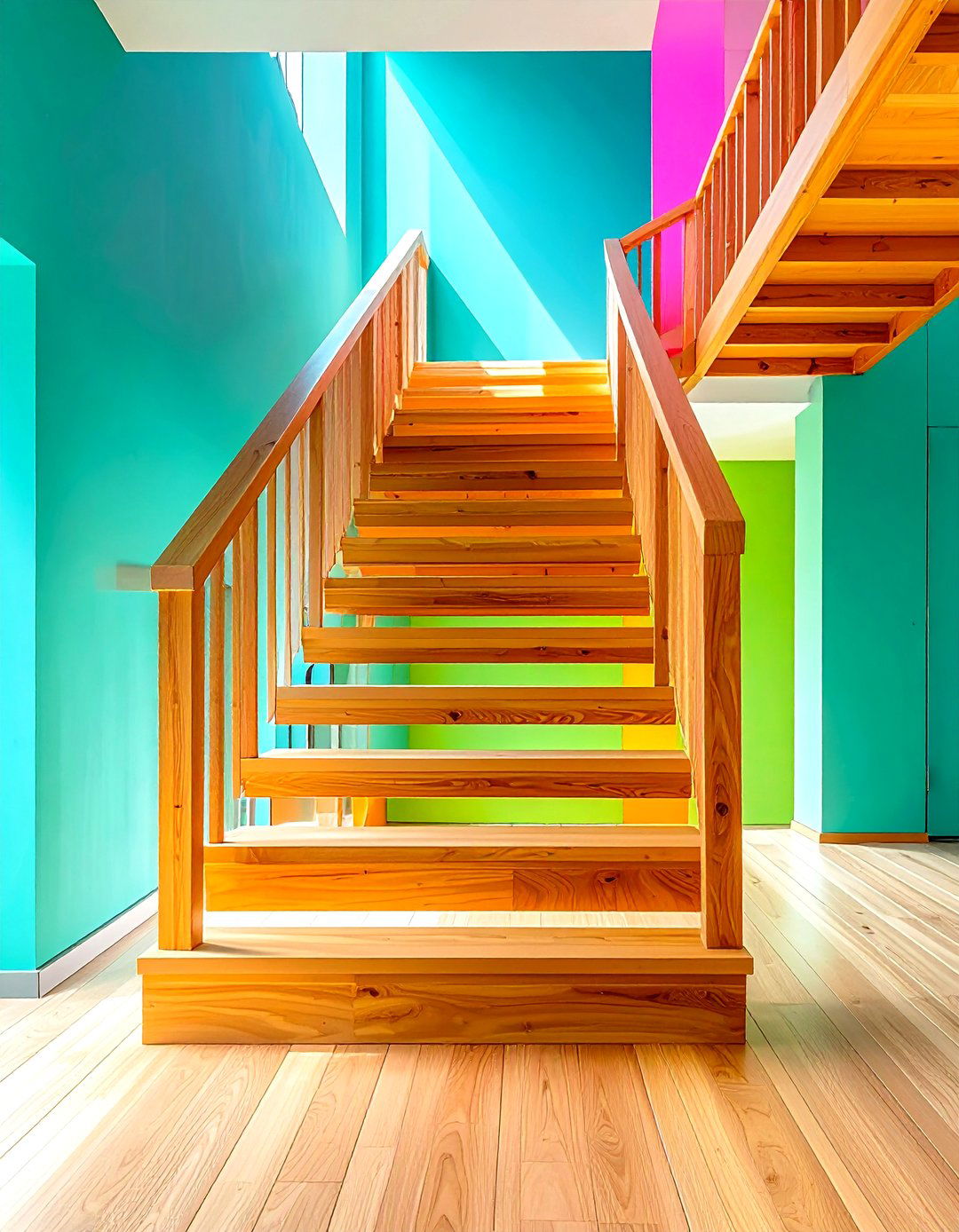
Minimalist design principles reach their pinnacle in this innovative wood stair railing approach that creates the illusion of weightless hanrails suspended without visible support mechanisms. Floating staircases with integrated wooden railings create open, airy feelings in spaces while making bold architectural statements. The engineering involves hidden mounting systems that secure hanrails to wall structures or concealed brackets, maintaining clean visual lines without compromising structural integrity. Popular configurations include single-sided wall-mounted hanrails for floating staircases or continuous hanrails that appear to hover alongside open risers. The wood selection emphasizes clean grain patterns and smooth finishes that complement the minimalist aesthetic. Installation requires careful coordination with structural elements to ensure adequate support while maintaining the floating appearance. This design works exceptionally well in contemporary and modern homes where architectural drama and spatial openness are desired. The visual impact creates stunning focal points that serve as functional art pieces while providing essential safety features.
11. Branch-Inspired Wood Stair Railing
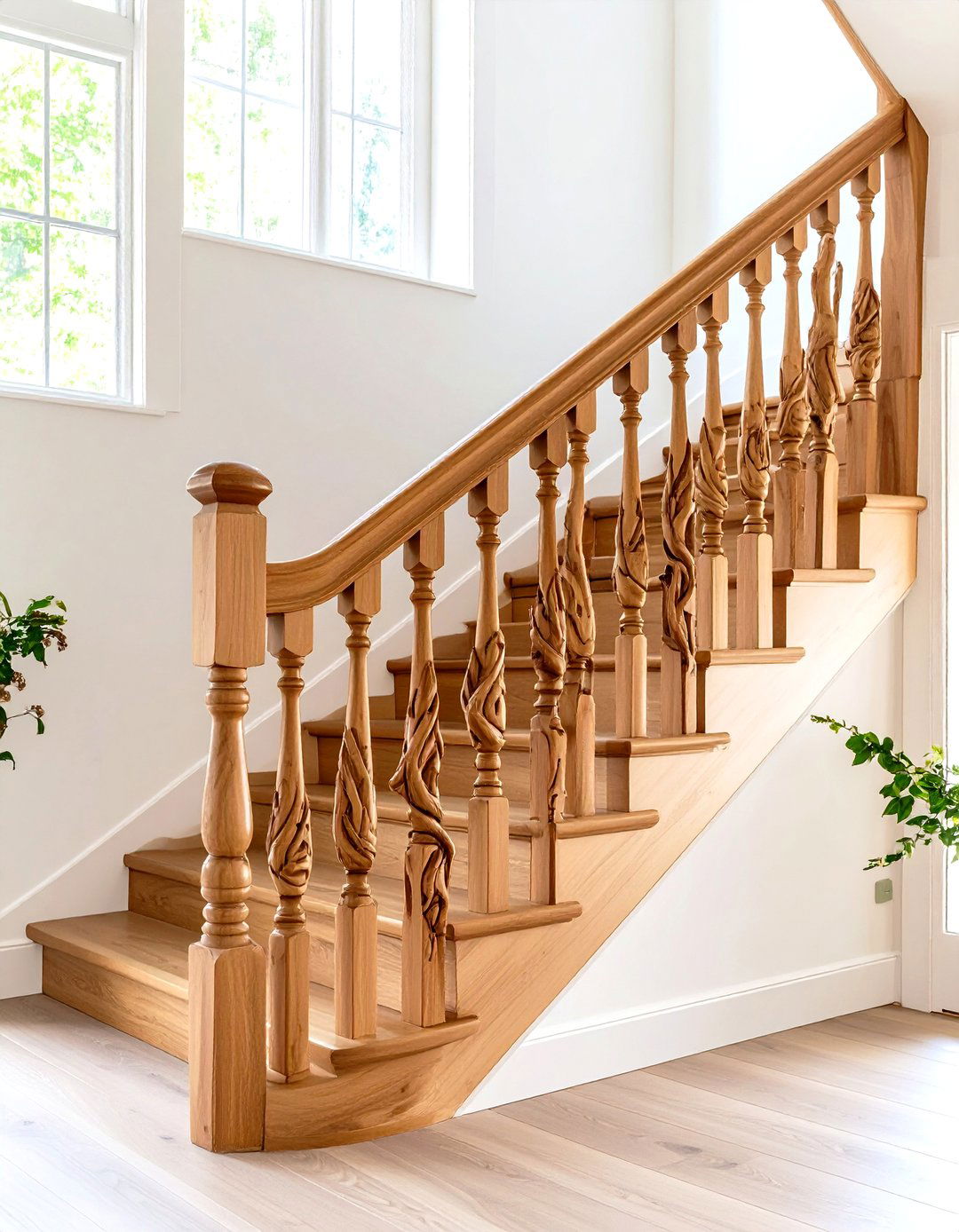
Natural artistry takes form in this whimsical wood stair railing design that mimics the organic shapes and branching patterns found in nature's own architectural elements. Branch-like balusters and carved wooden motifs create enchanting touches that bring outdoor beauty into interior spaces. Skilled craftspeople shape individual wooden components to resemble twisted branches, complete with knots, texture variations, and organic irregularities that celebrate natural forms. The installation becomes a unique artistic expression that transforms functional railings into sculptural elements. Popular wood choices include species with interesting grain patterns and natural character marks that enhance the organic appearance. Each piece requires individual attention during fabrication, making every installation a one-of-a-kind creation. The branch motifs work exceptionally well in rustic, cabin, lodge, and nature-inspired interior designs where connection to the outdoors is celebrated. This approach creates conversation pieces that delight residents and visitors while maintaining all necessary safety functions. The organic shapes soften architectural lines and add whimsical personality to utilitarian elements.
12. Wood Stair Railing with Geometric Cutouts
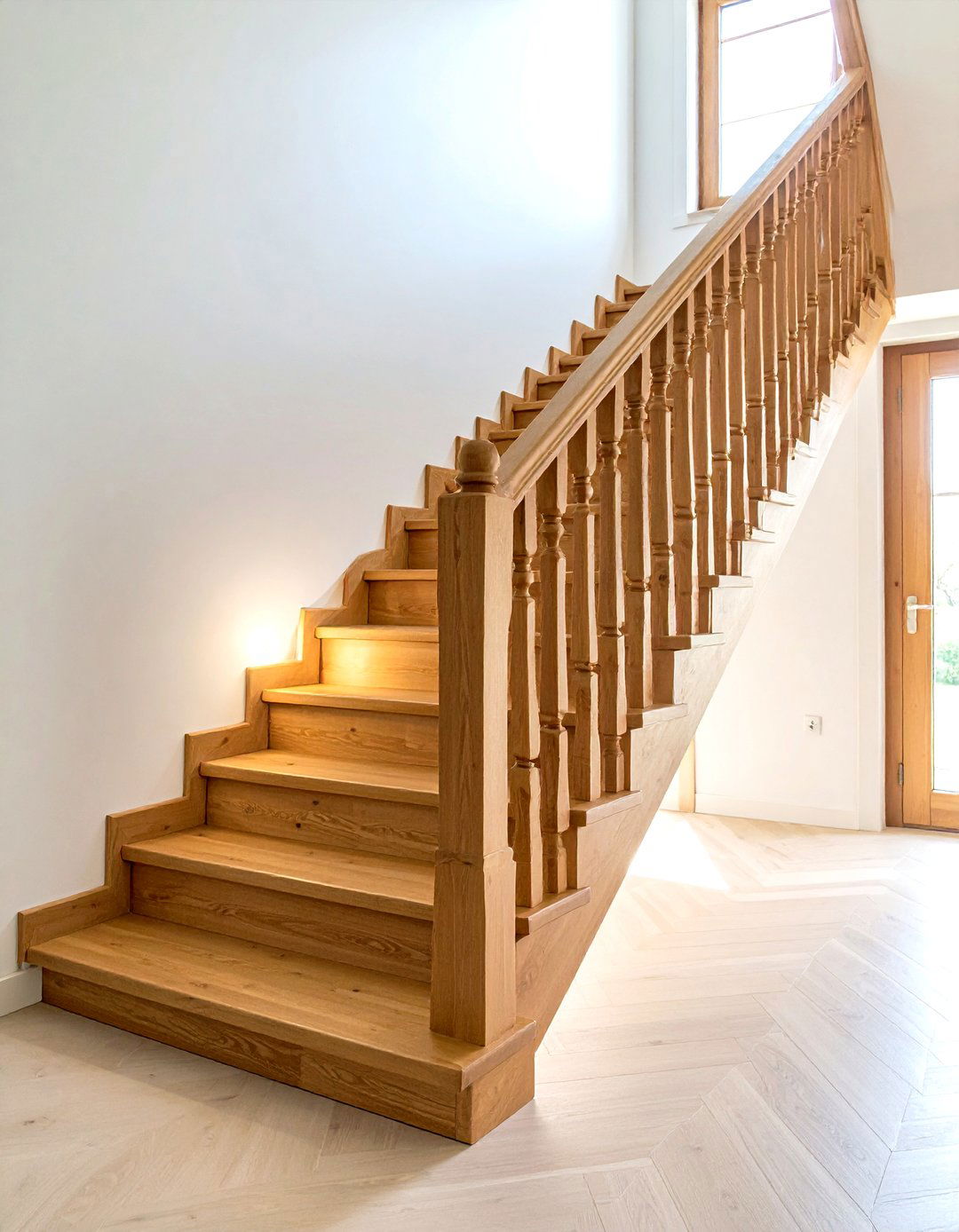
Contemporary craftsmanship shines through this innovative wood stair railing design featuring precision-cut geometric patterns that create visual lightness while maintaining structural integrity. Geometric cutout designs in wooden balusters create clean, modern appearances that complement contemporary interior aesthetics. The patterns range from simple squares and rectangles to complex interlocking shapes that cast interesting shadow patterns throughout the day. Computer-controlled cutting equipment ensures precise repeatability and clean edges that emphasize the geometric designs. Popular motifs include hexagons, diamonds, circles, and custom patterns that reflect personal preferences or architectural themes. The cutouts reduce the visual weight of solid wooden components while maintaining required structural performance. Installation requires careful attention to grain direction and structural considerations to prevent weakness at cut areas. This design approach works exceptionally well in modern and contemporary homes where architectural details serve as artistic elements. The interplay of solid and void creates dynamic visual interest that changes with lighting conditions and viewing angles.
13. Two-Tone Wood Stair Railing Design
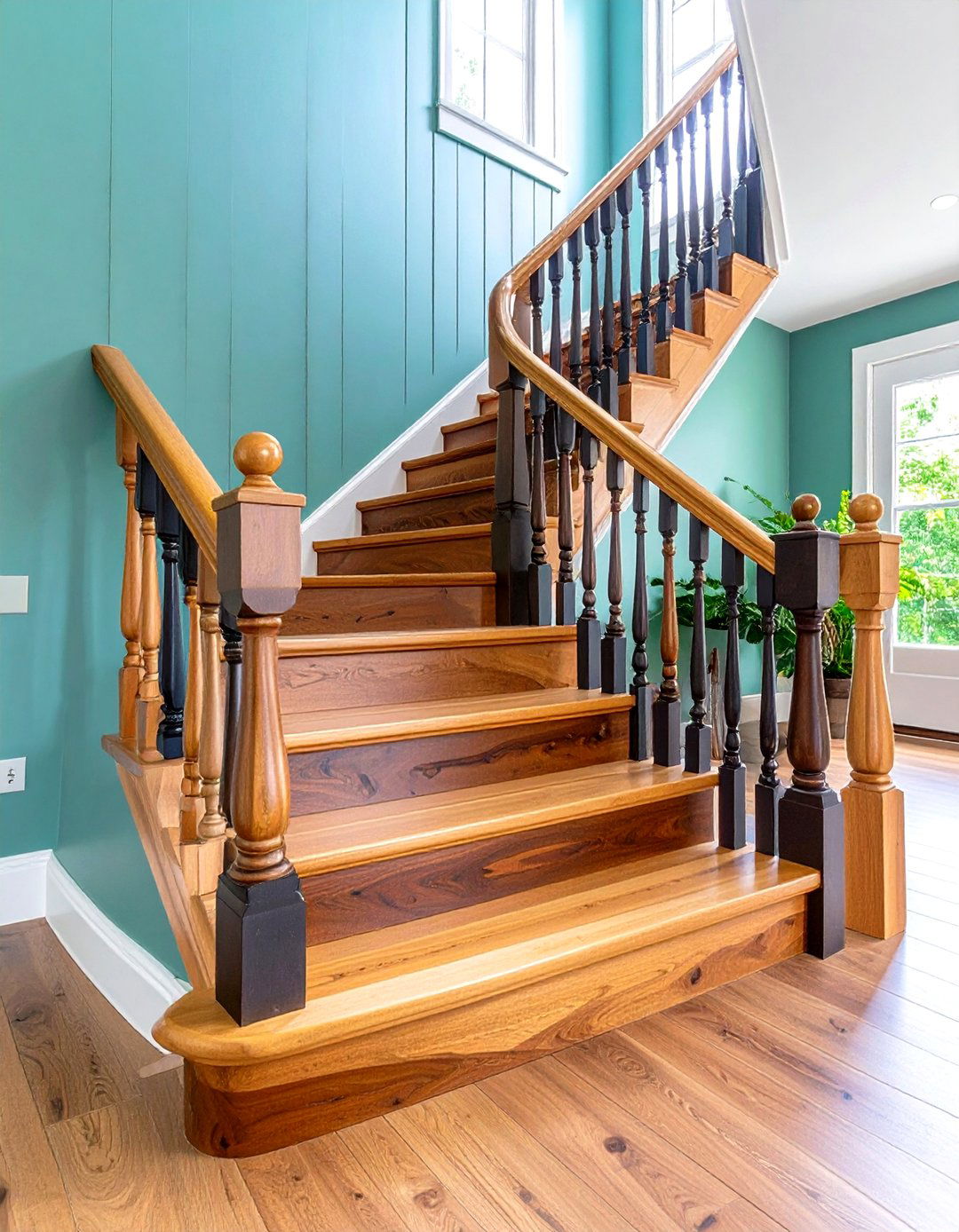
Visual sophistication emerges from this striking wood stair railing approach that combines different wood species or stain colors to create dramatic contrast and architectural interest. The two-tone technique allows light wood hanrails to sit atop darker balusters, creating sophisticated color combinations that serve as focal points. Popular combinations include natural maple or ash hanrails with dark walnut posts, or painted white components contrasted with natural wood elements. The color variation creates depth and dimension while allowing each component to maintain its individual character and beauty. Strategic placement of contrasting elements draws the eye along the staircase progression, creating visual movement and interest. Professional finishing ensures seamless transitions between different tones while maintaining consistent quality and durability. This approach works well in transitional and contemporary homes where sophisticated color palettes are appreciated. The two-tone concept can extend to include metal accents, creating three-material combinations that add complexity and visual richness. Installation requires careful color matching and finishing coordination to achieve professional results.
14. Wood Stair Railing with Metal Pipe Balusters
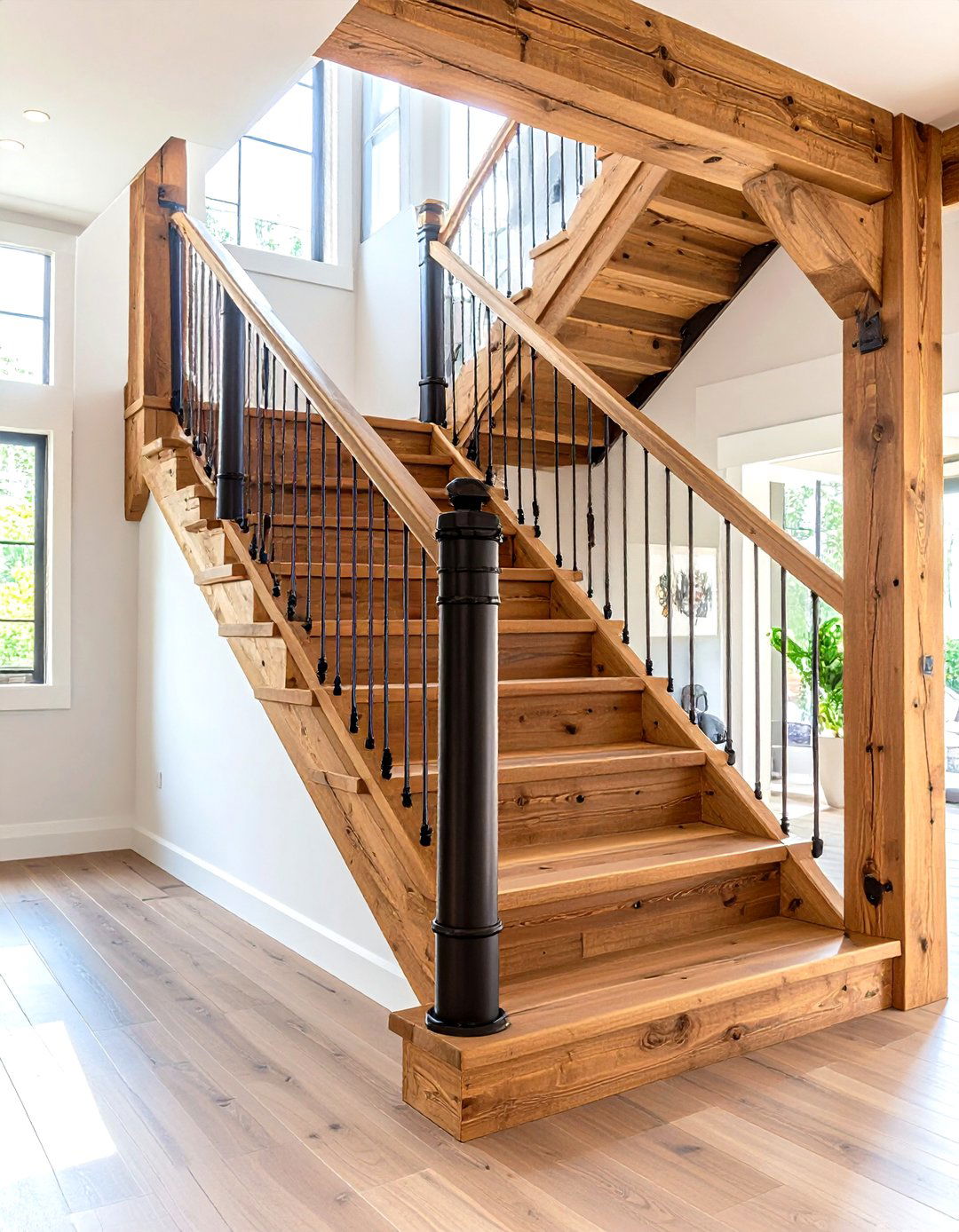
Industrial aesthetics blend with natural warmth in this contemporary wood stair railing design that incorporates metal pipe balusters for strength, durability, and modern visual appeal. The narrow wood and metal combination creates modern aesthetics that balance practical functionality with attractive design elements. Black iron or steel pipes provide slim profiles that maintain open sight lines while meeting safety requirements through appropriate spacing. The metal components offer superior strength and longevity compared to traditional wooden balusters, while the wooden hanrails and posts provide comfortable grip surfaces and visual warmth. Popular configurations include vertical pipes with wooden top and bottom rails, or horizontal pipe runs between wooden posts. The contrast between materials creates sophisticated industrial styling that works well in lofts, modern farmhouses, and contemporary homes. Installation involves precise hole drilling and secure mounting to ensure structural integrity. The metal components require minimal maintenance while the wooden elements can be refinished as needed to maintain appearance.
15. Reclaimed Wood Stair Railing

Environmental consciousness meets rustic beauty in this sustainable wood stair railing approach that transforms salvaged materials into stunning architectural features with rich history and character. Reclaimed wood from old barns, mills, and historic structures provides weathered textures and unique patina that cannot be replicated in new materials. Each piece carries its own story through nail holes, saw marks, weathering patterns, and age-related characteristics that add authentic vintage appeal. The environmental benefits include reducing waste and preserving historical materials that might otherwise be discarded. Popular sources include barn wood, old growth timber, and deconstructed building materials that offer superior grain patterns and stability. Professional cleaning, treatment, and refinishing prepare reclaimed materials for safe interior use while preserving their distinctive character. The installation process accommodates variations in dimensions and characteristics that make each piece unique. This approach works exceptionally well in farmhouse, rustic, and industrial design styles where authentic materials are valued. The sustainable choice supports environmental responsibility while creating stunning design elements.
16. Wood Stair Railing with Rope Details
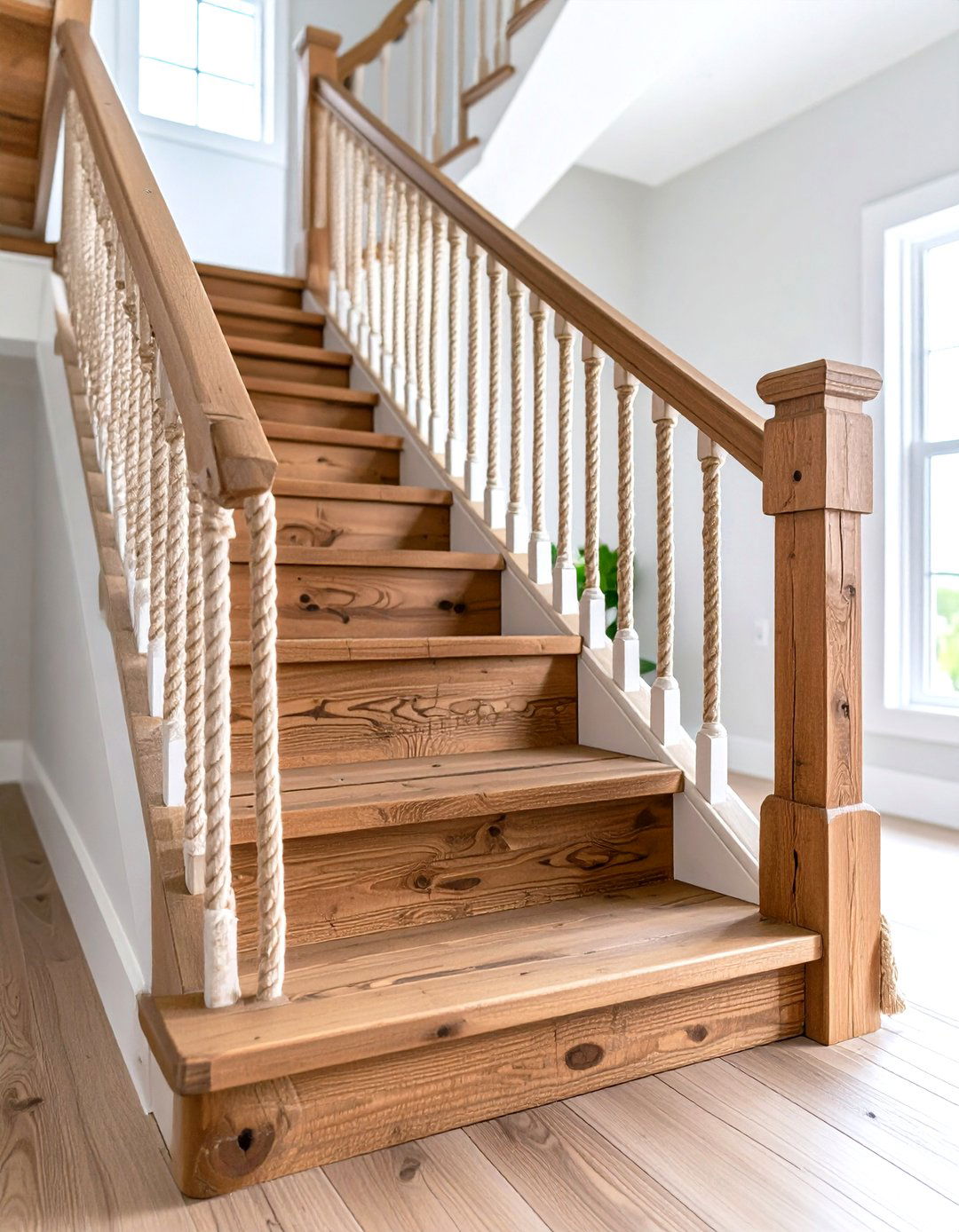
Nautical inspiration and coastal themes find expression in this unique wood stair railing design that incorporates natural fiber rope elements for texture, visual interest, and maritime character. The rope components can serve as decorative accents wrapped around posts, functional infill between wooden rails, or artistic details that reference marine and sailing traditions. Natural manila, jute, or synthetic ropes provide different aesthetic qualities and durability characteristics suitable for various applications. The combination creates casual, relaxed atmospheres that work well in beach houses, coastal homes, and spaces with nautical themes. Professional installation ensures proper rope treatment for interior use, including protective coatings and secure attachment methods that prevent unraveling or loosening over time. The rope elements require periodic inspection and replacement as natural fibers age and wear. This design approach adds tactile interest and unique character that distinguishes the installation from conventional railings. The rope details can be combined with weathered or painted wood finishes to enhance coastal aesthetics. Regular maintenance includes cleaning and conditioning to preserve appearance and functionality.
17. Contemporary Wood Stair Railing with Clean Lines

Minimalist sophistication defines this sleek wood stair railing design that emphasizes geometric precision, smooth surfaces, and uncluttered profiles for maximum contemporary impact. Clean lines and smooth curves highlight the natural warmth and simplicity of wood while creating perfect backdrops for modern architectural features. The design philosophy eliminates decorative elements in favor of pure form and function, allowing the wood's natural beauty to serve as the primary aesthetic element. Popular configurations include flat rectangular hanrails, square posts, and simple geometric balusters that maintain consistent proportions and spacing. Professional finishing techniques create flawless surfaces that emphasize the wood's grain patterns without distracting details. The understated elegance works exceptionally well in contemporary and modern homes where architectural details serve supporting roles to overall spatial compositions. Installation requires precise craftsmanship to achieve the seamless appearance that defines successful minimalist design. This approach creates timeless appeal that transcends temporary trends while providing lasting value and visual satisfaction.
18. Wood Stair Railing with Mixed Wood Species
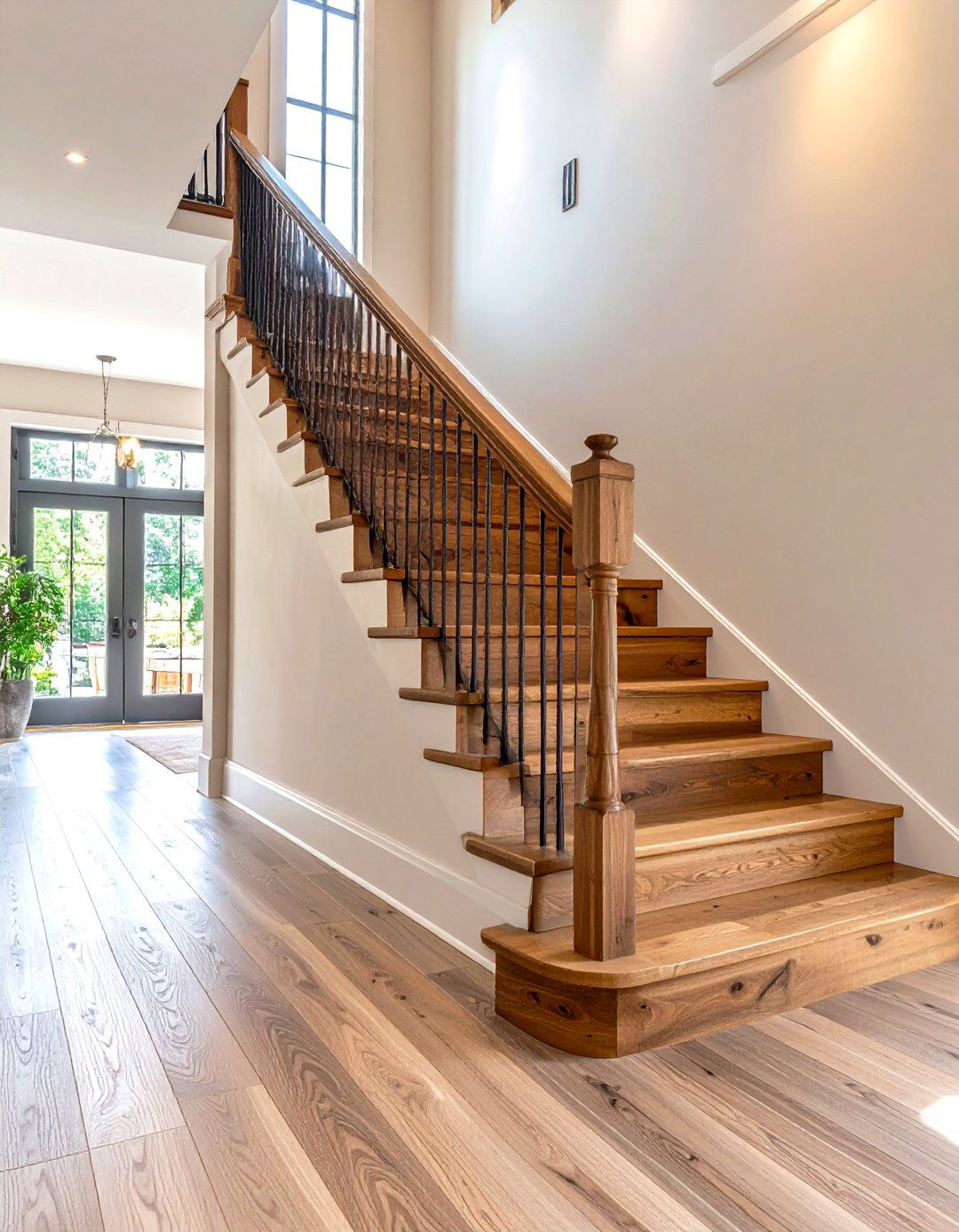
Artistic expression flourishes in this sophisticated wood stair railing design that combines different wood species to create rich visual compositions through contrasting grain patterns, colors, and textures. The approach celebrates the unique characteristics of various timber species while creating harmonious overall compositions. Popular combinations include light maple or ash with dark walnut accents, cherry with white oak details, or exotic species like zebra wood with domestic hardwoods. The contrasting elements can be arranged in alternating patterns, accent stripes, or feature details that highlight specific components. Professional design ensures compatible expansion rates and finishing requirements that maintain long-term stability and appearance. The mixed species approach creates custom appearances that cannot be achieved with single wood types. Installation requires careful selection and matching of materials to ensure consistent quality and performance. This design works well in homes where woodworking craftsmanship is appreciated and celebrated. The resulting combinations create unique signatures that reflect personal taste and architectural sophistication. Proper finishing techniques unify different species while preserving their individual characteristics.
19. Open Riser Wood Stair Railing
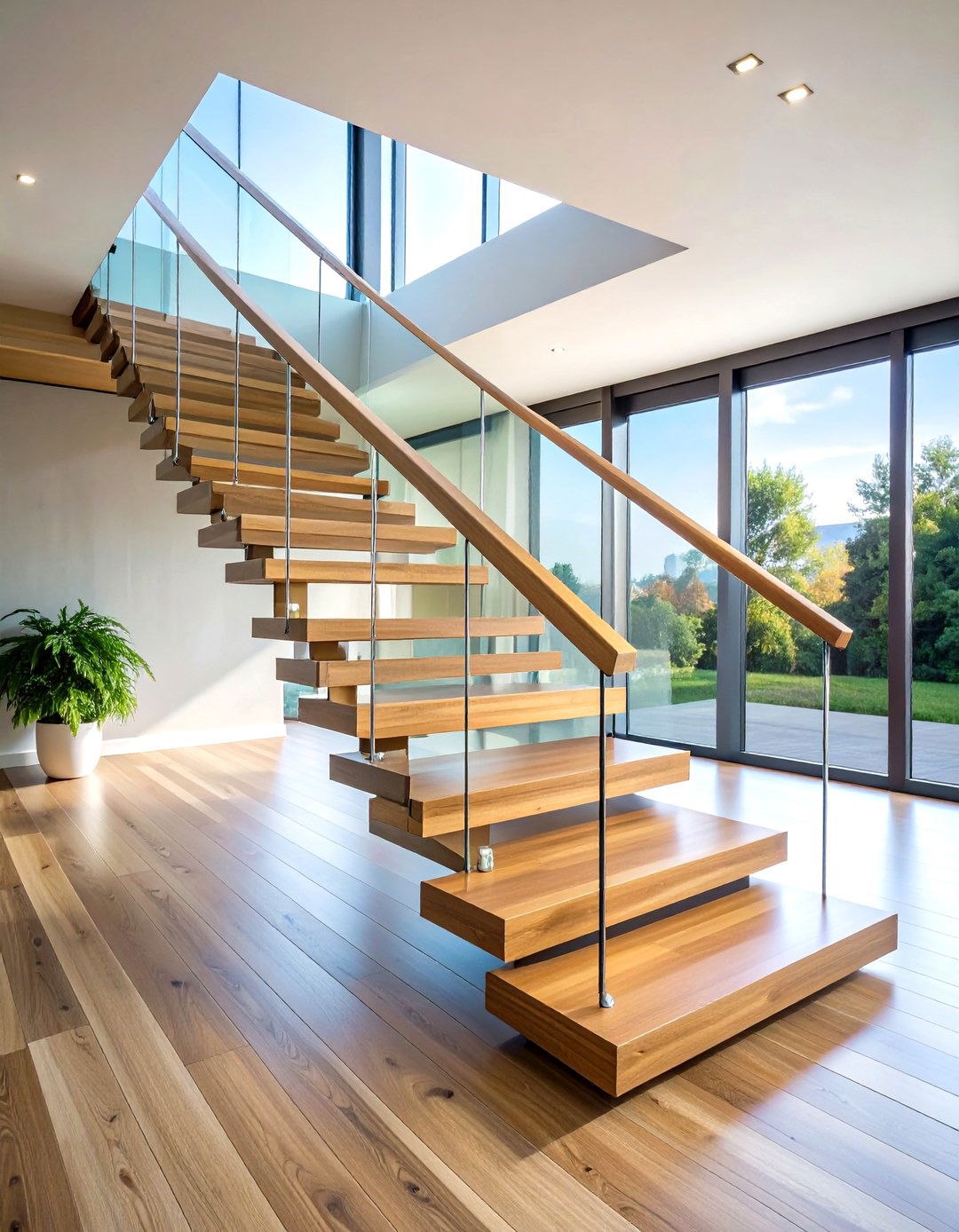
Contemporary spatial concepts embrace this modern wood stair railing design featuring open risers that create transparent, airy appearances while maximizing natural light transmission throughout multi-level spaces. Open riser configurations allow light to flow freely while creating the illusion of floating treads supported by minimal structural elements. The wooden railings provide necessary safety barriers while maintaining the open aesthetic through careful proportioning and placement. Popular configurations include single-sided railings for wall-mounted staircases or bilateral systems for freestanding installations. The visual lightness works exceptionally well in modern and contemporary homes where spatial transparency and natural light are prioritized. Professional engineering ensures structural adequacy while meeting building codes for safety and accessibility. The open design creates dramatic sight lines and spatial connections between levels that enhance architectural flow. Installation requires precise coordination between stair structure and railing components to achieve seamless integration. This approach transforms utilitarian elements into architectural features that serve as functional sculpture within living spaces.
20. Wood Stair Railing with Industrial Hardware
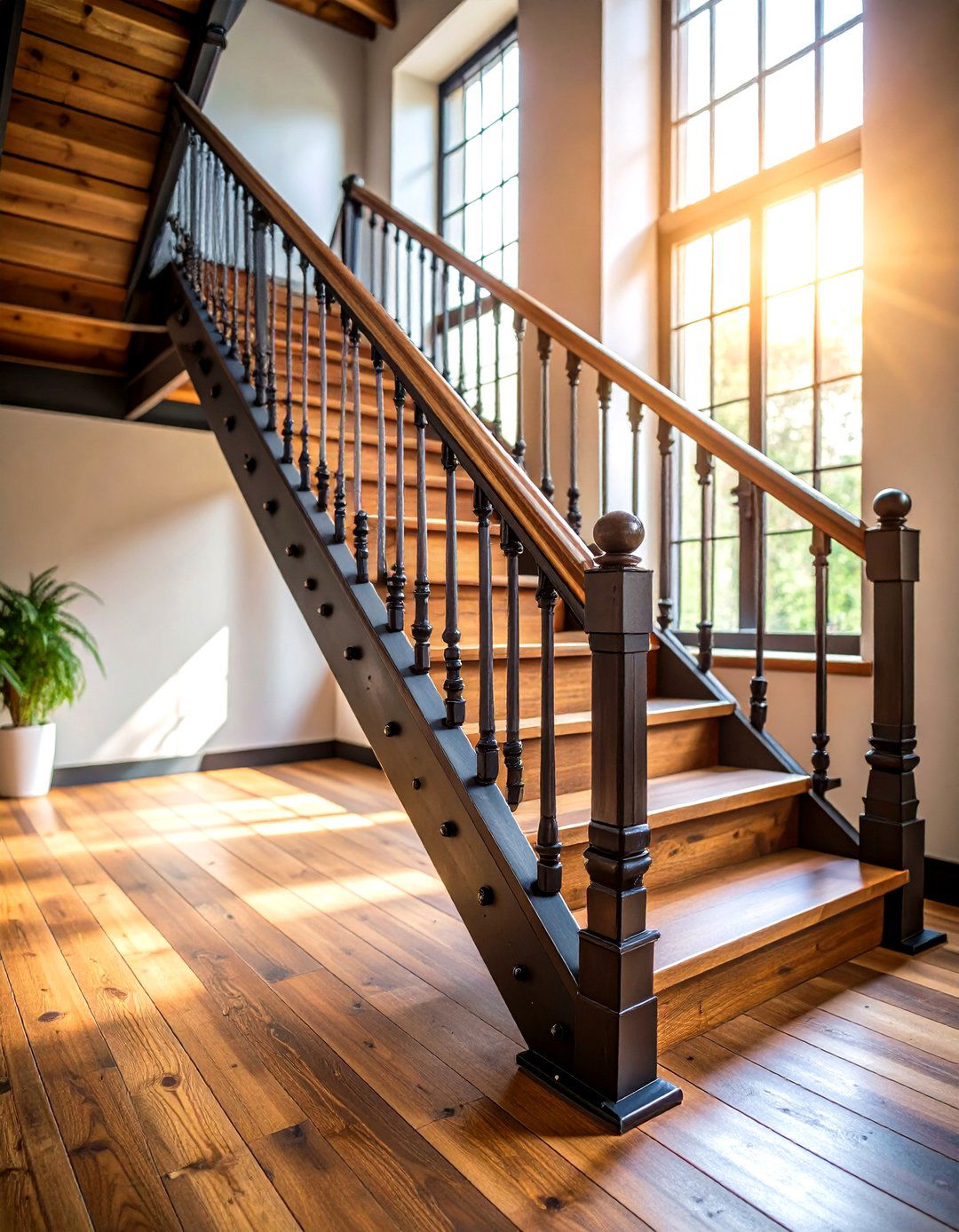
Urban sophistication meets natural warmth in this contemporary wood stair railing design that incorporates exposed industrial hardware elements for authentic metropolitan styling and robust functionality. Industrial elements infuse raw charm that complements rustic surroundings while adding contemporary edge through exposed hardware and metal components. The approach celebrates functional beauty through visible bolts, brackets, tension systems, and connection details that typically remain hidden in conventional installations. Popular hardware includes stainless steel cables, black iron fittings, galvanized steel components, and custom-fabricated brackets that emphasize mechanical aesthetics. The exposed elements create visual interest while demonstrating engineering solutions and structural logic. Professional installation ensures all hardware meets structural requirements while maintaining the desired aesthetic impact. This design works exceptionally well in lofts, converted industrial spaces, and contemporary homes where authentic materials and honest construction details are appreciated. The industrial components provide superior durability and strength while creating unique visual signatures. Regular maintenance includes hardware inspection and adjustment to maintain optimal performance and appearance. The combination creates sophisticated urban styling that bridges traditional craftsmanship with contemporary industrial design sensibilities.
Conclusion:
Wood stair railings continue to evolve as both functional safety elements and stunning architectural features that define interior spaces. From traditional farmhouse charm to cutting-edge contemporary designs featuring LED integration, the 20 ideas presented offer diverse approaches to enhance any home's aesthetic appeal. Whether combining wood with metal accents, incorporating sustainable reclaimed materials, or embracing minimalist clean lines, these designs demonstrate how thoughtful railing selection transforms ordinary staircases into extraordinary focal points. The key lies in matching railing style to architectural context while prioritizing safety, durability, and personal preference to create lasting value and visual satisfaction.


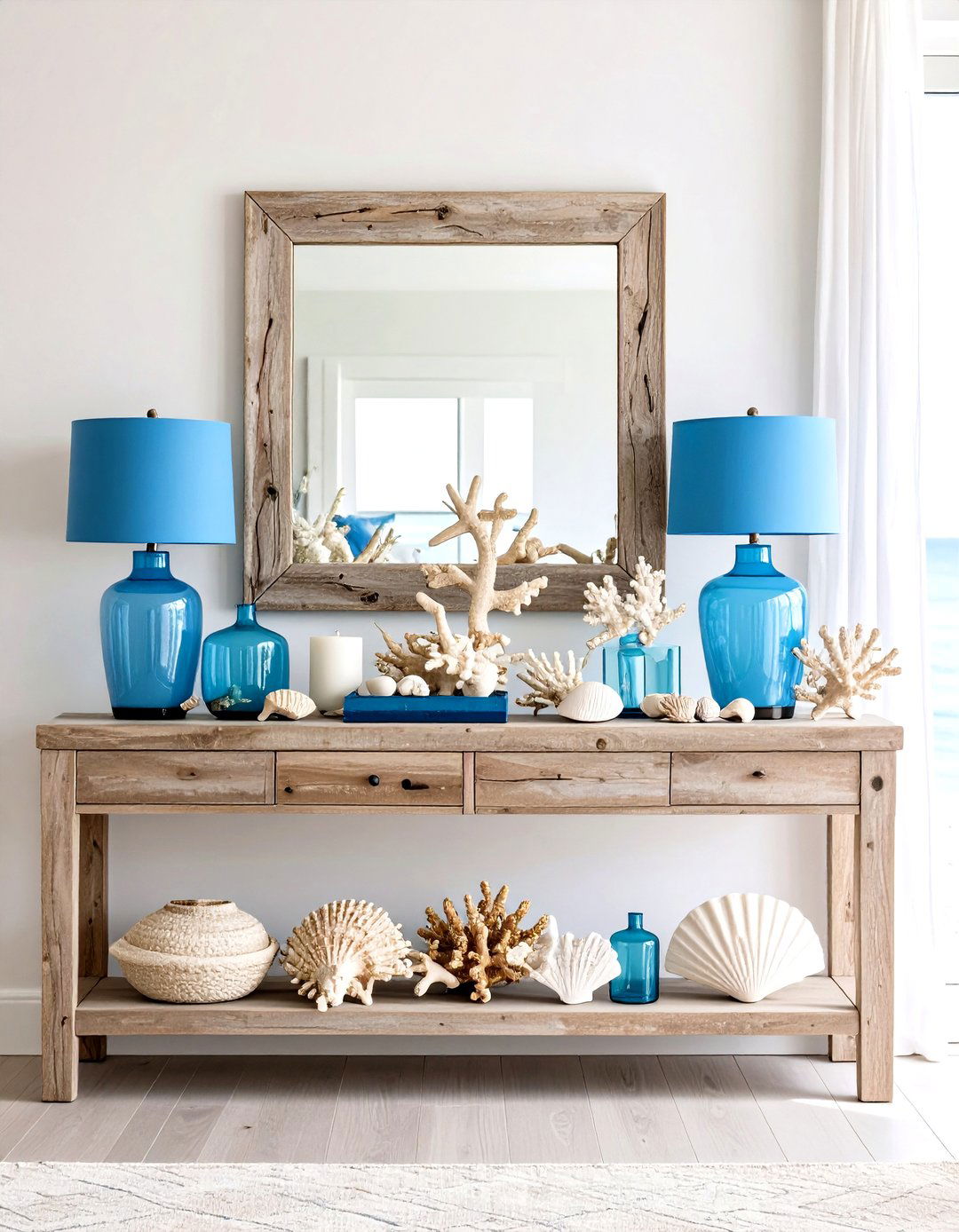
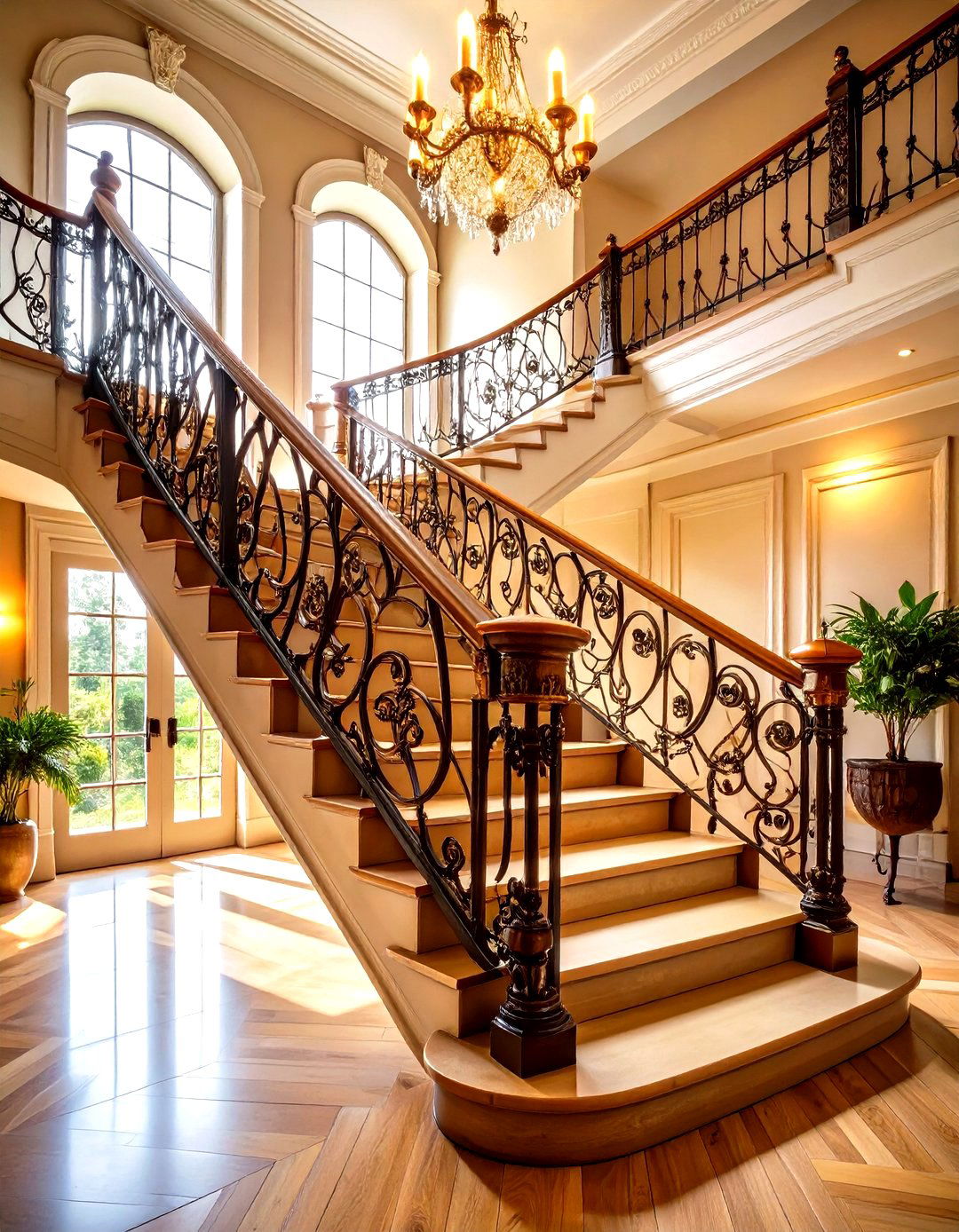
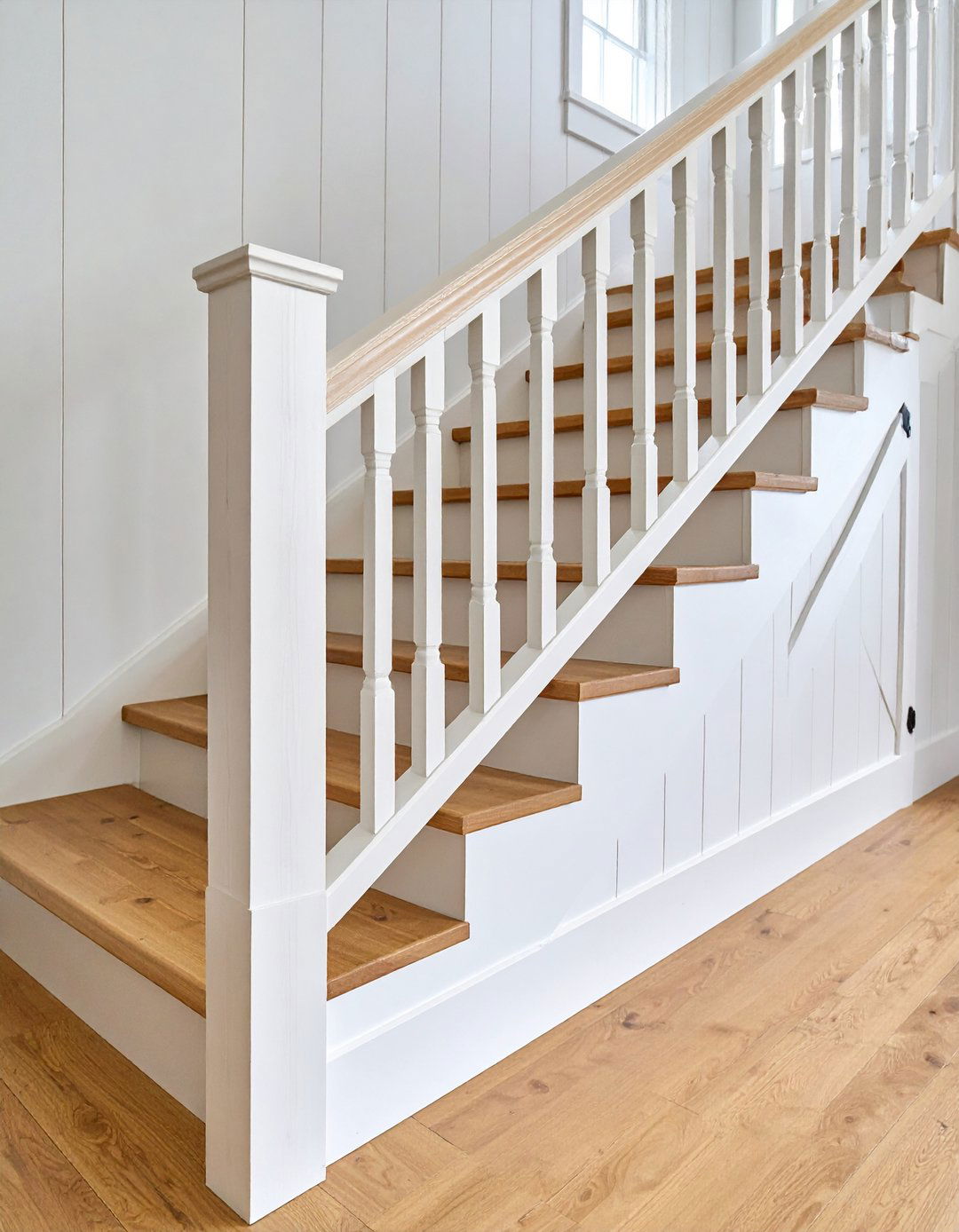


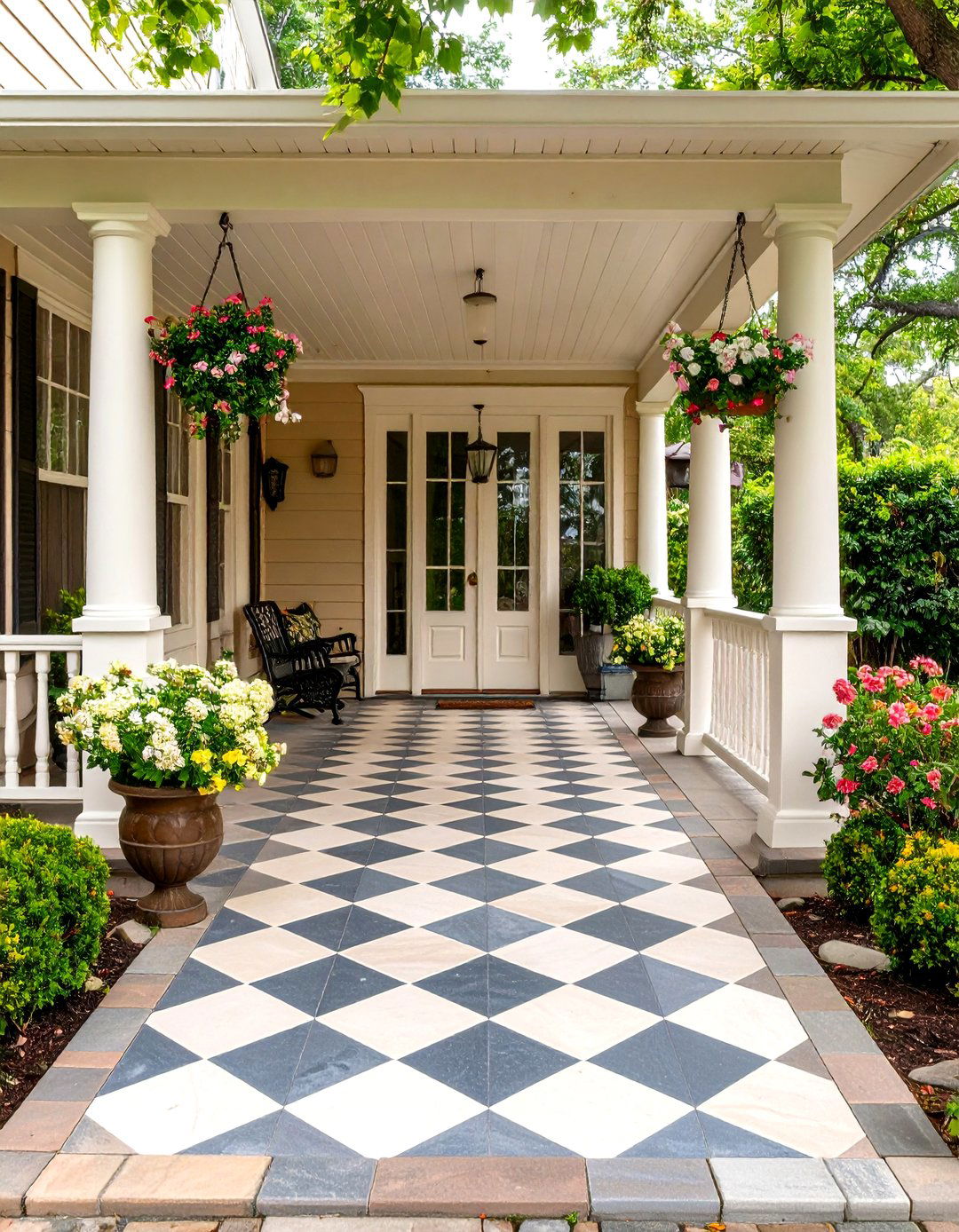
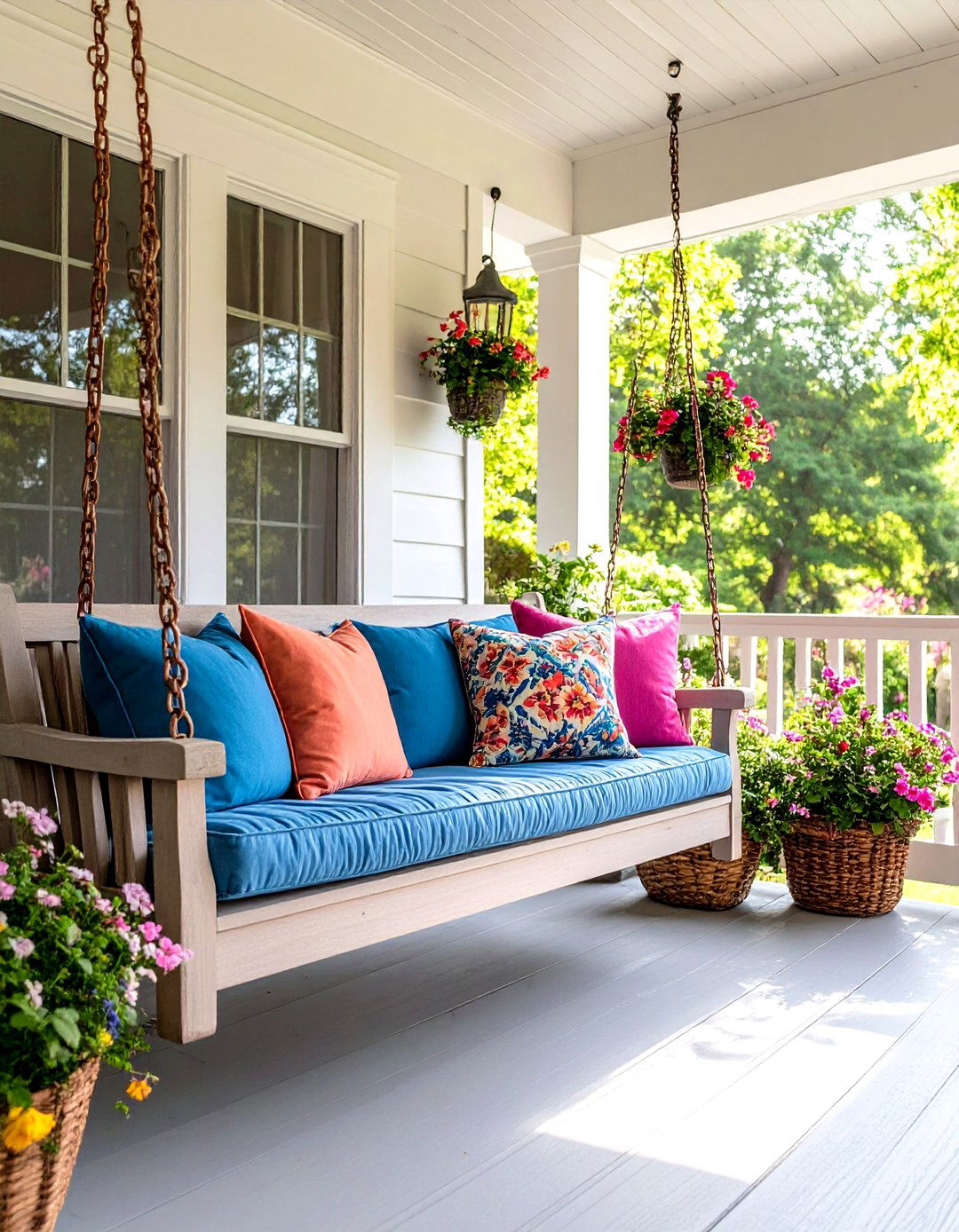
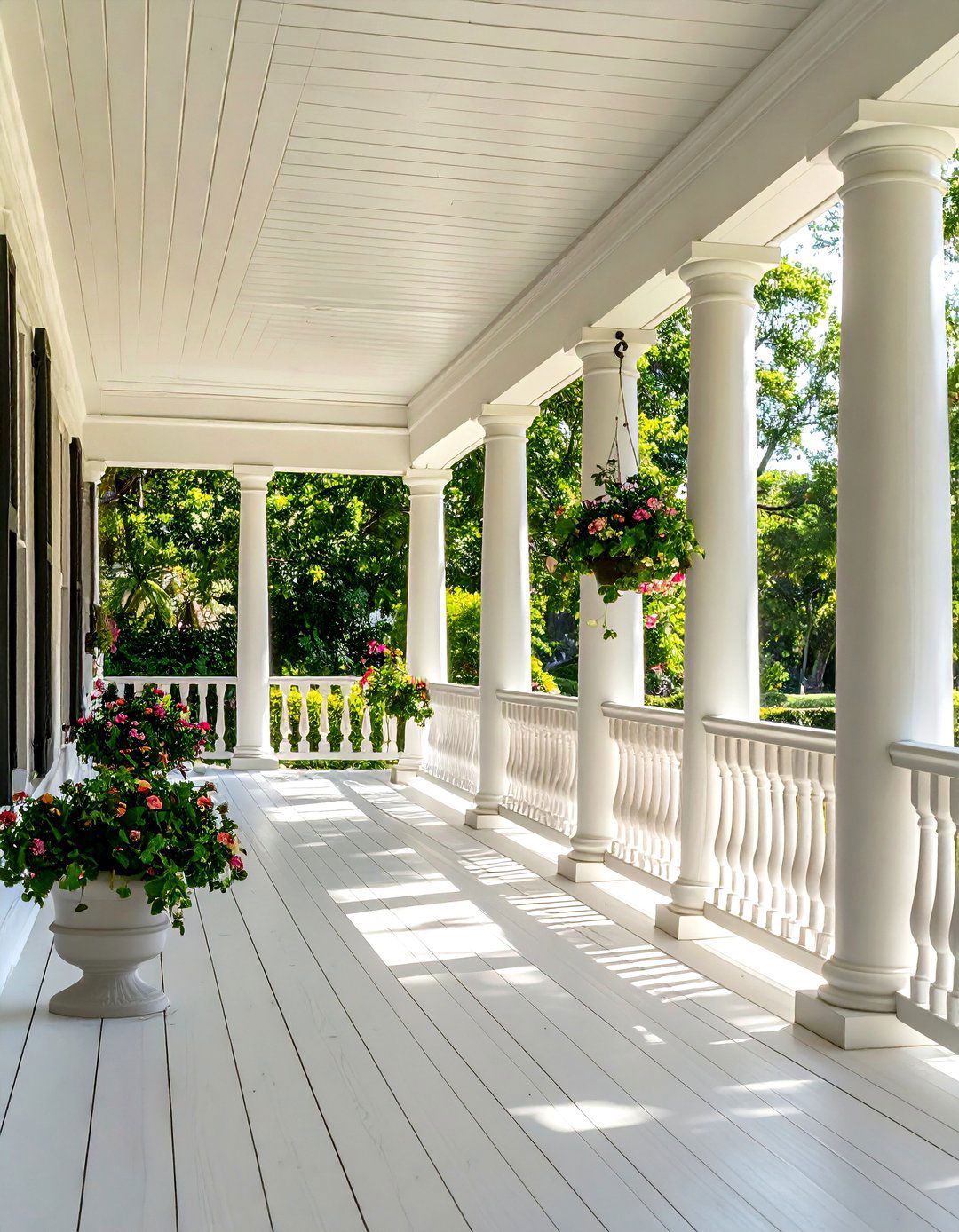

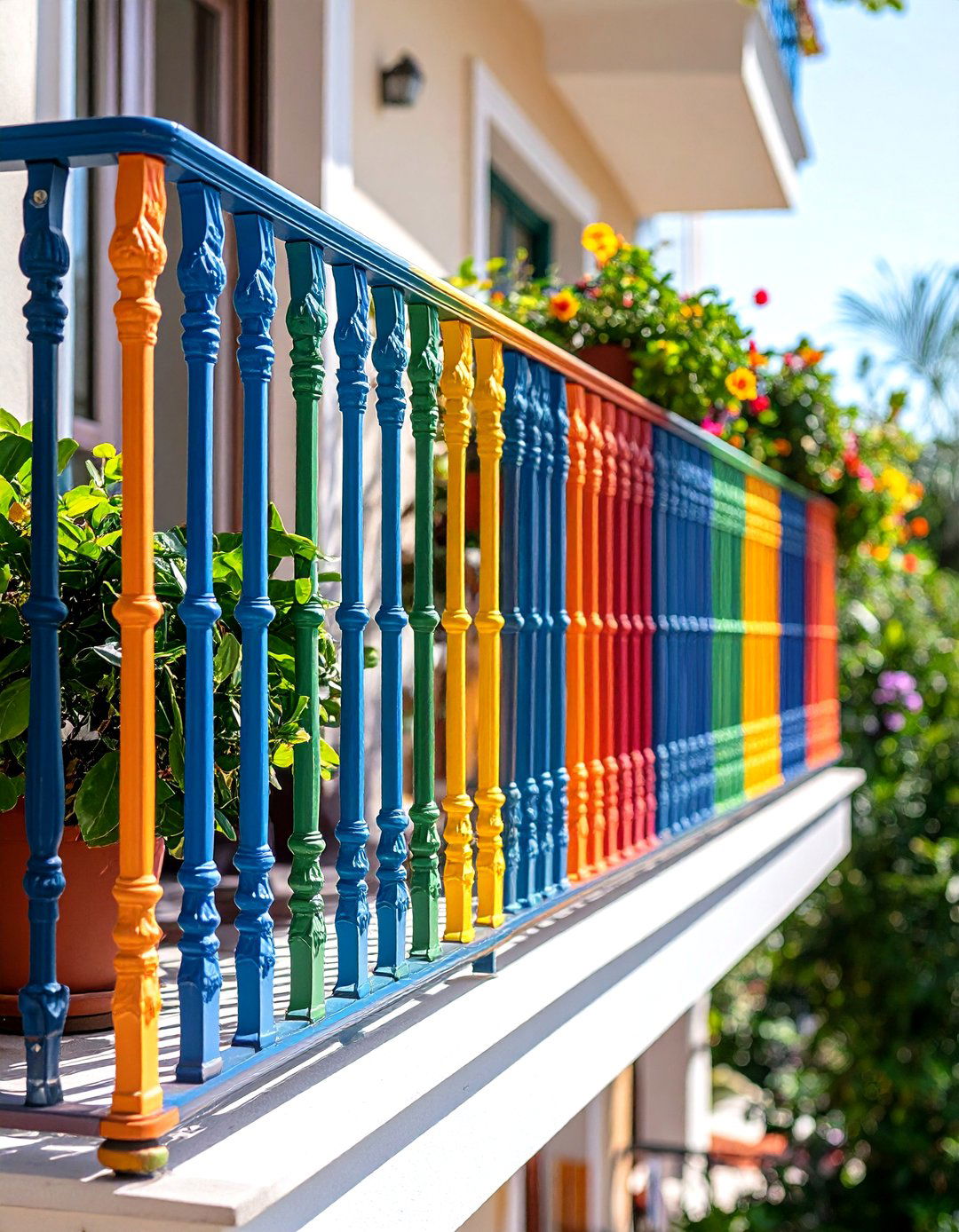
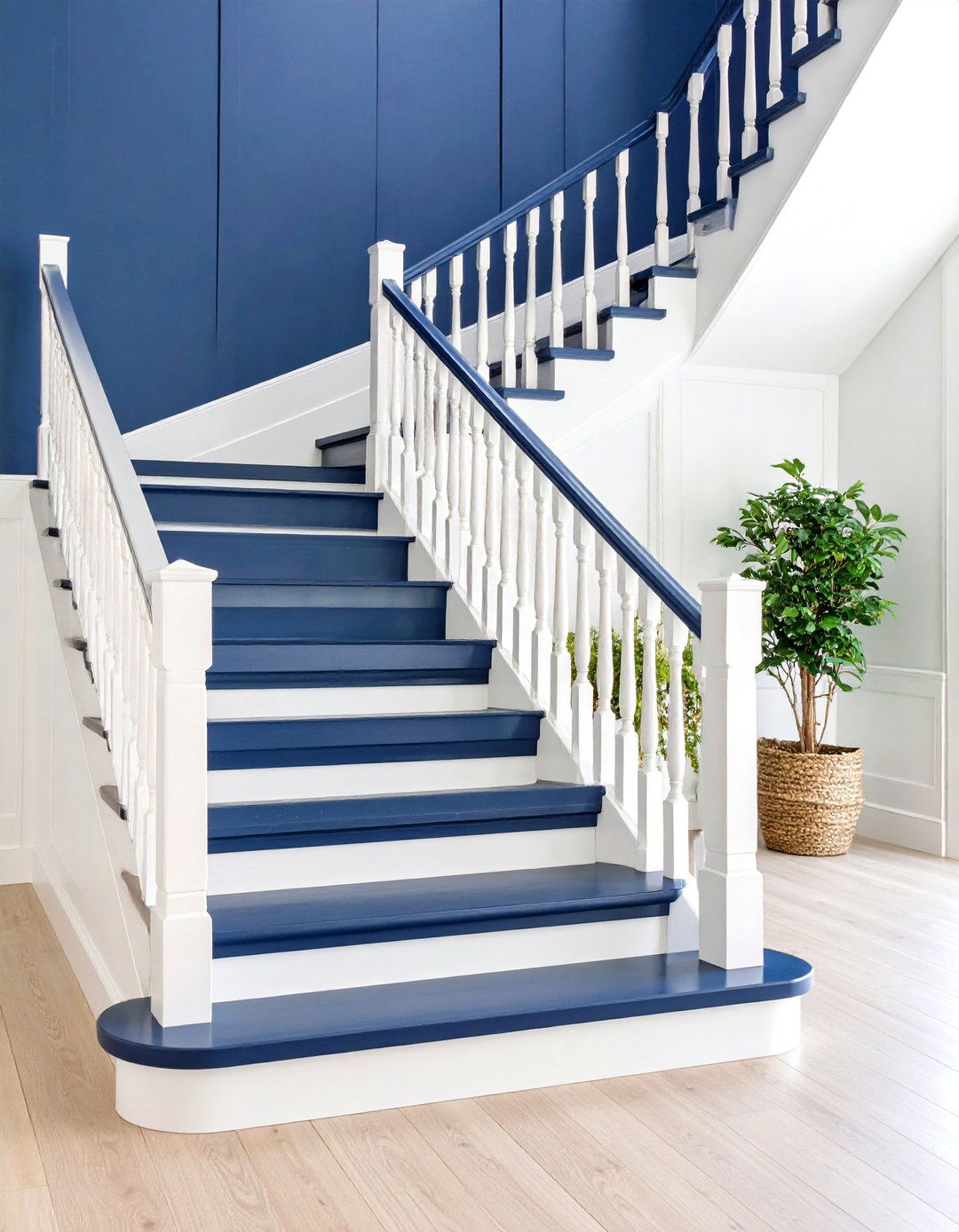
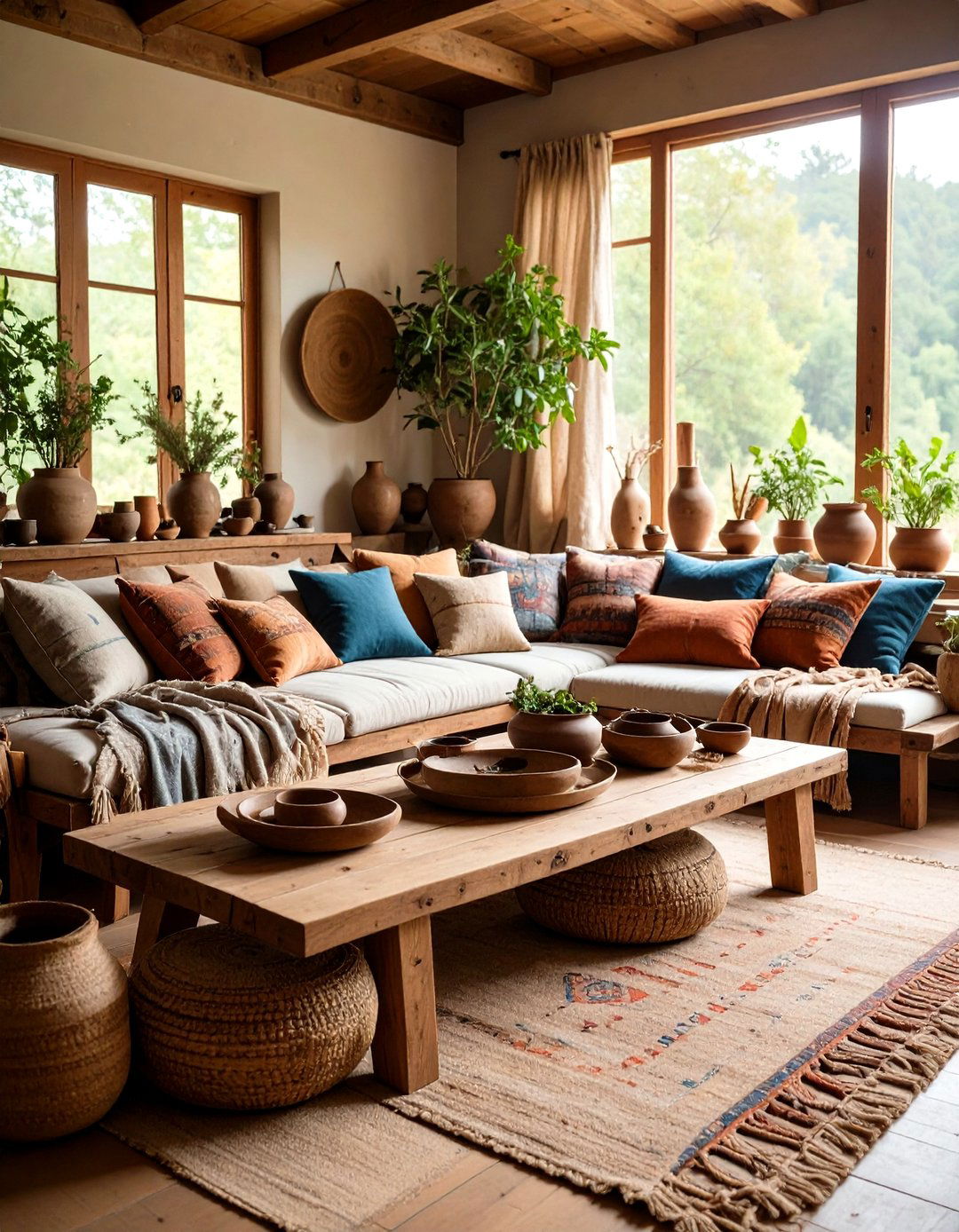
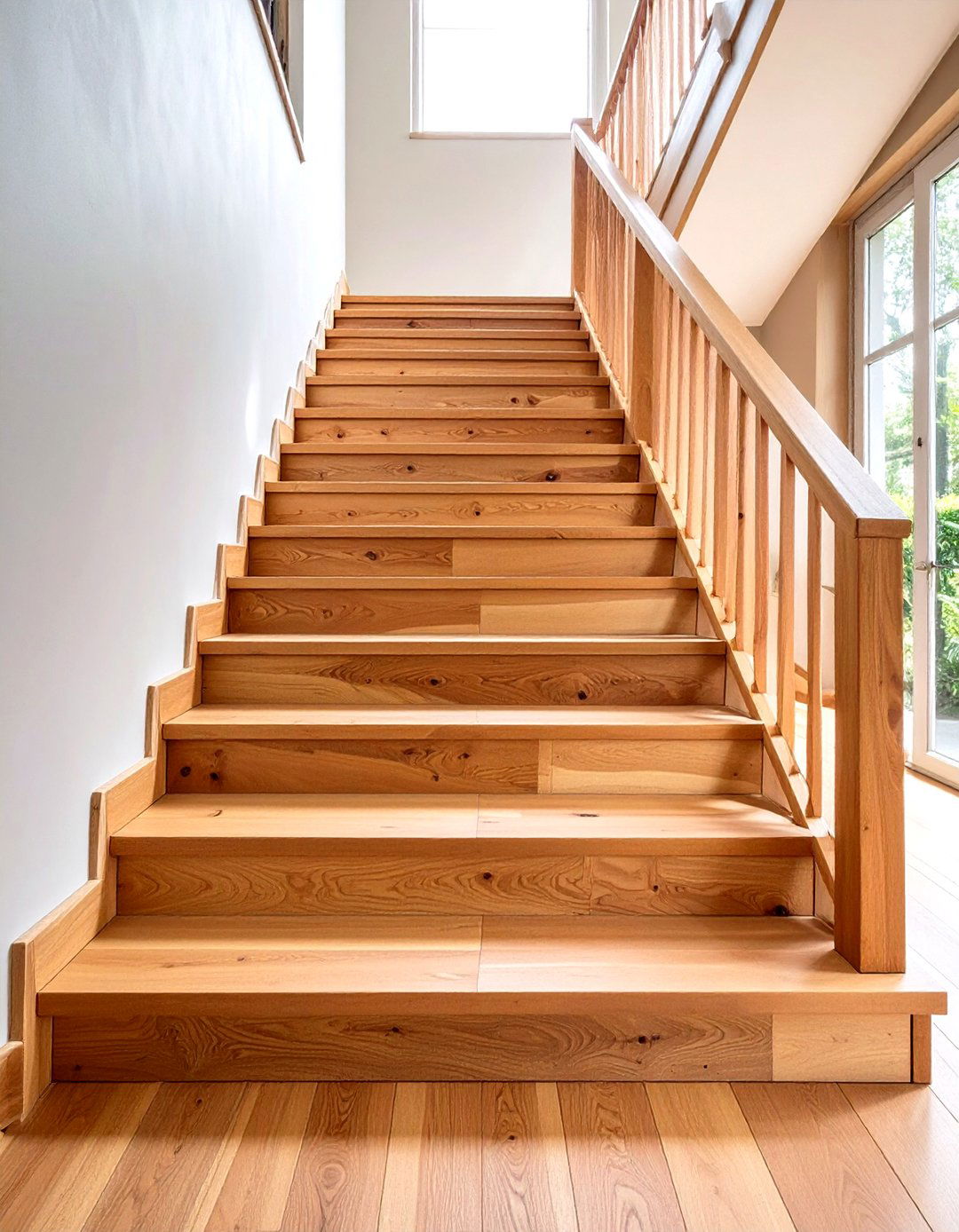
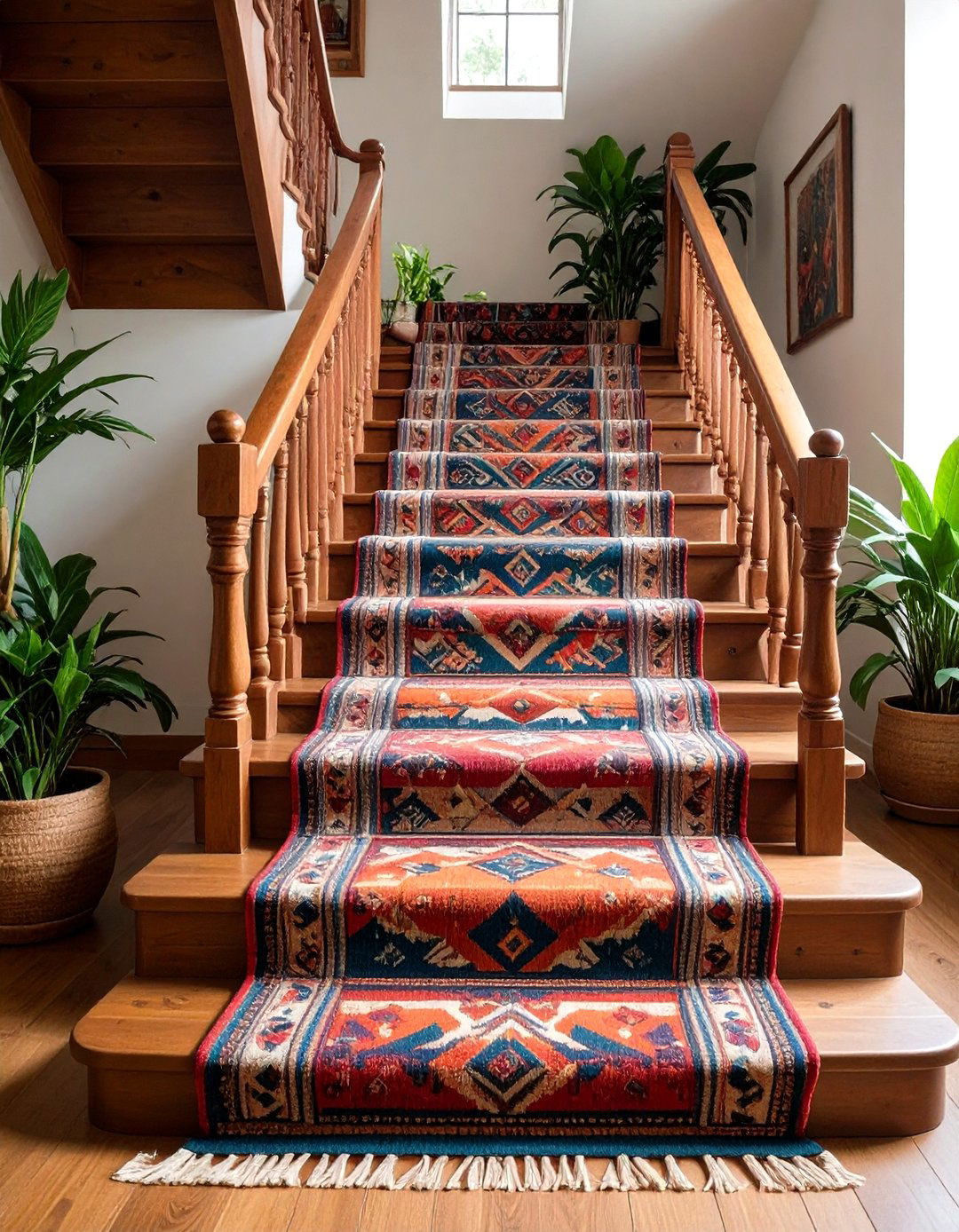
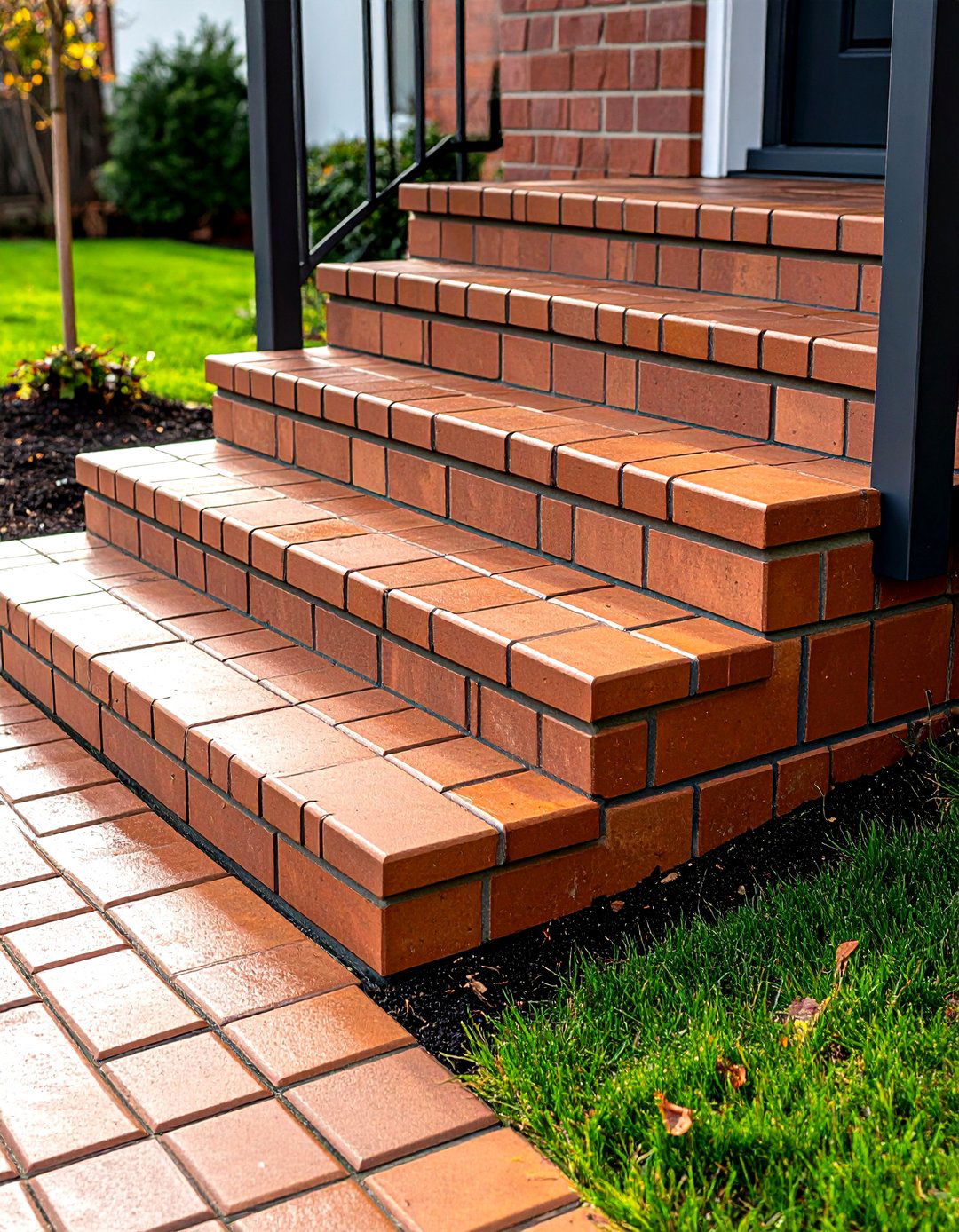
Leave a Reply